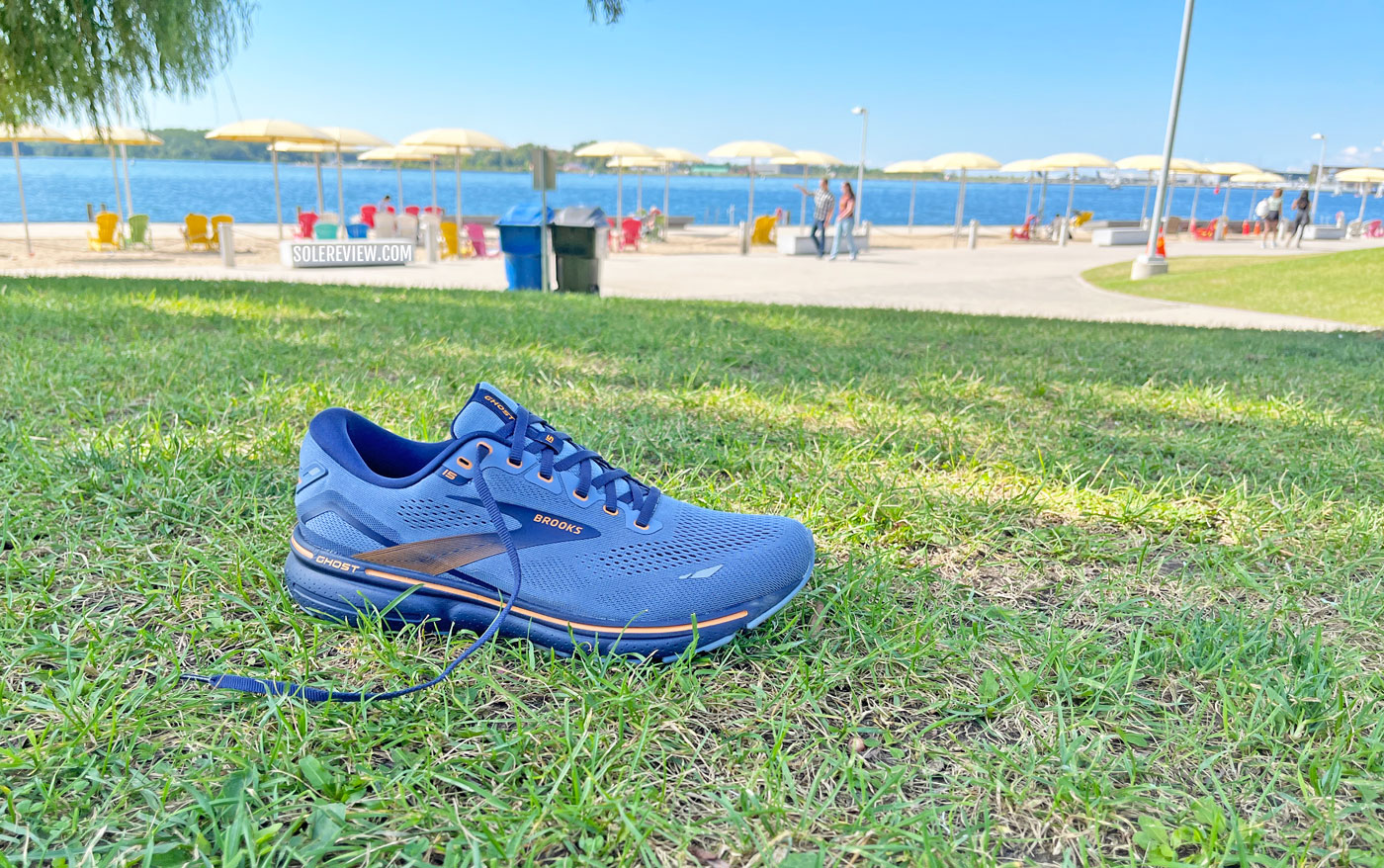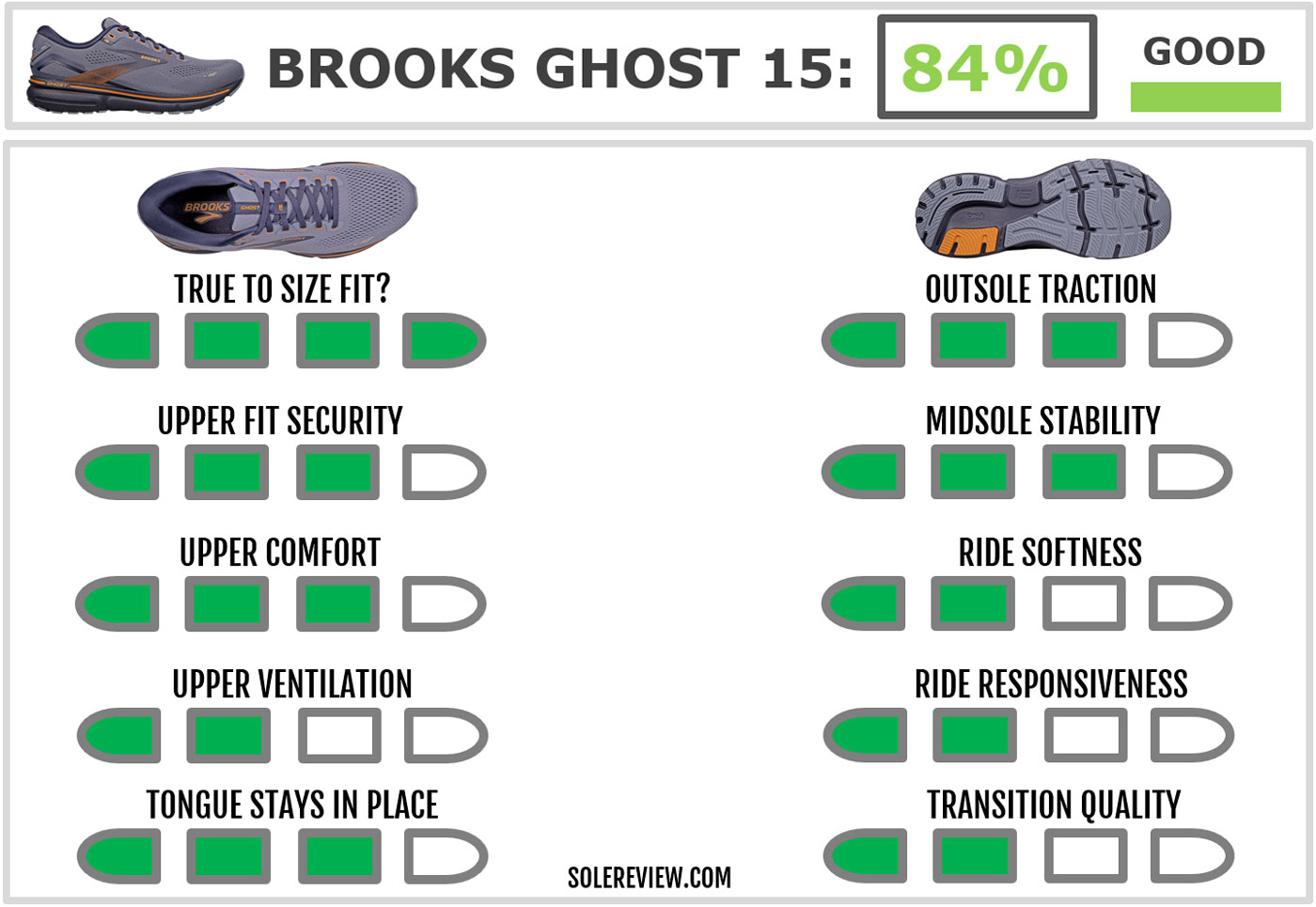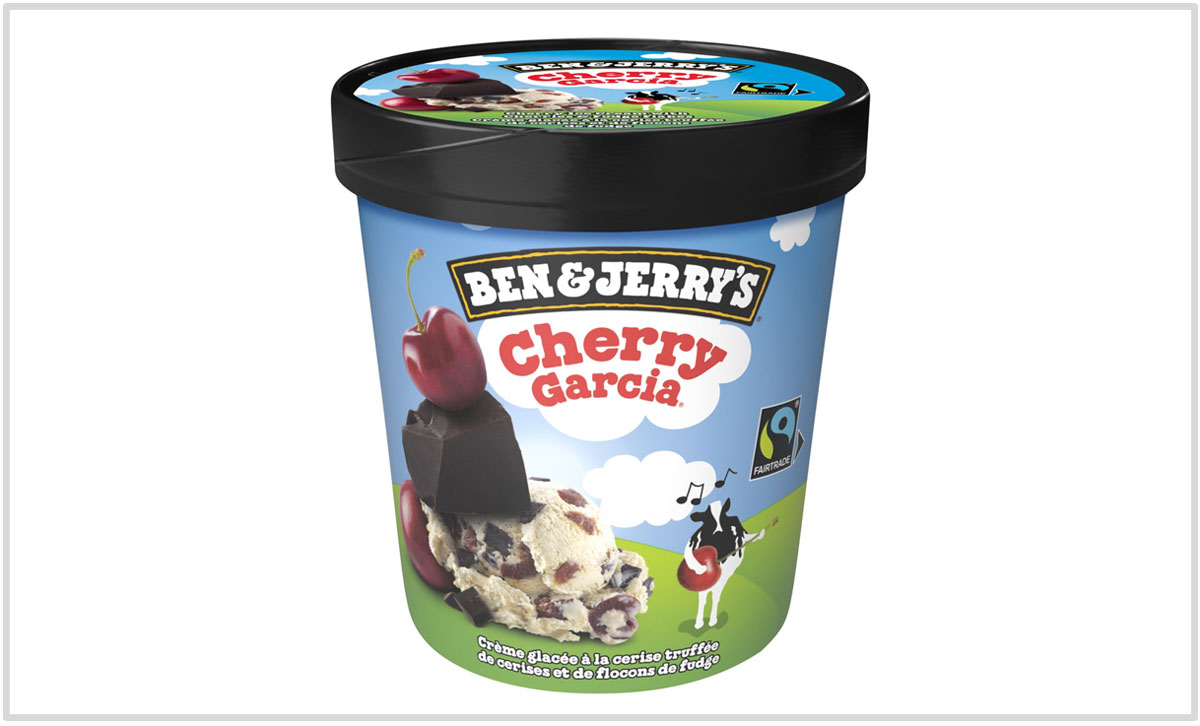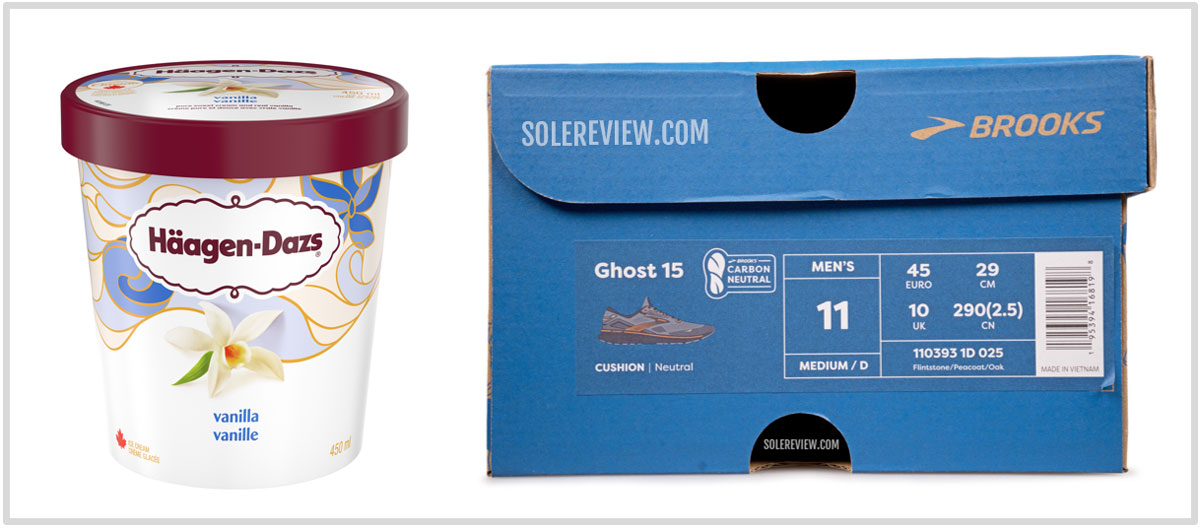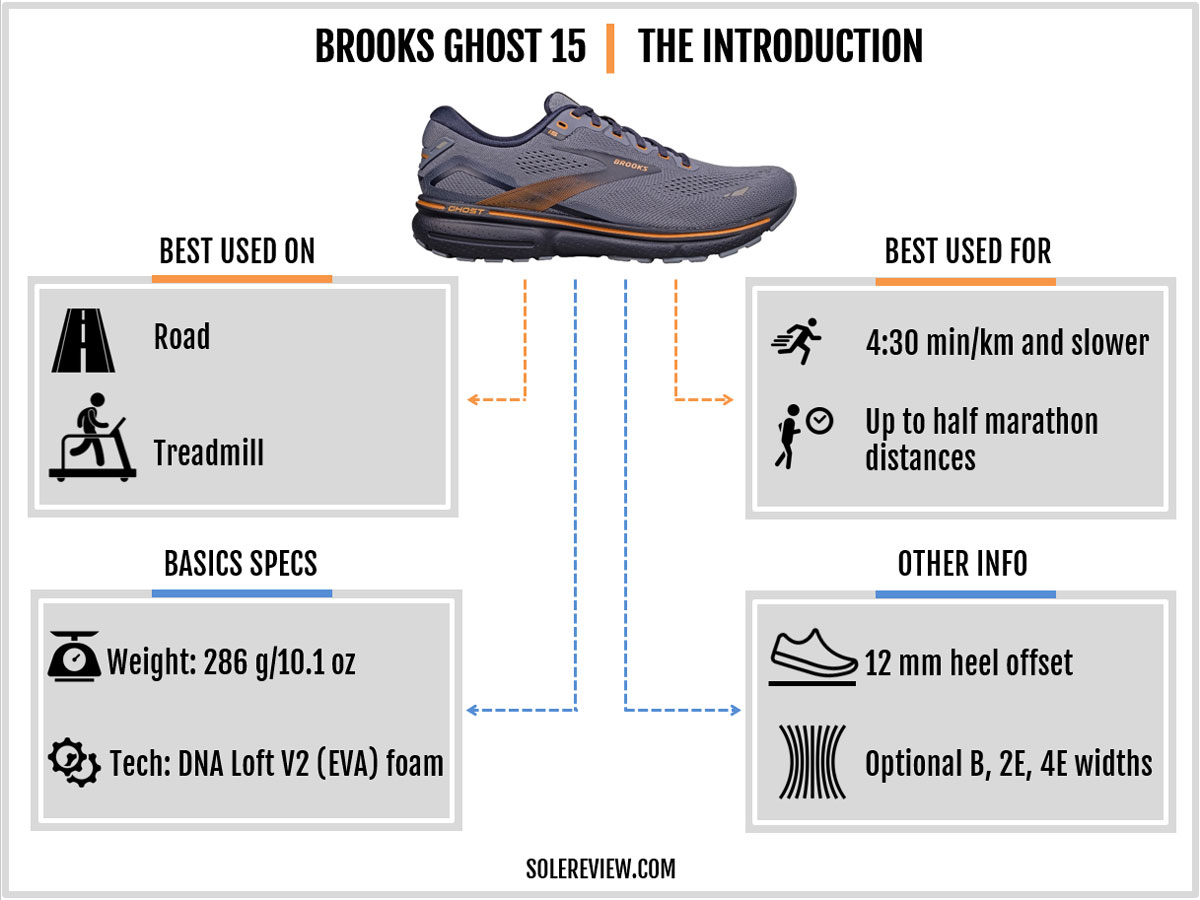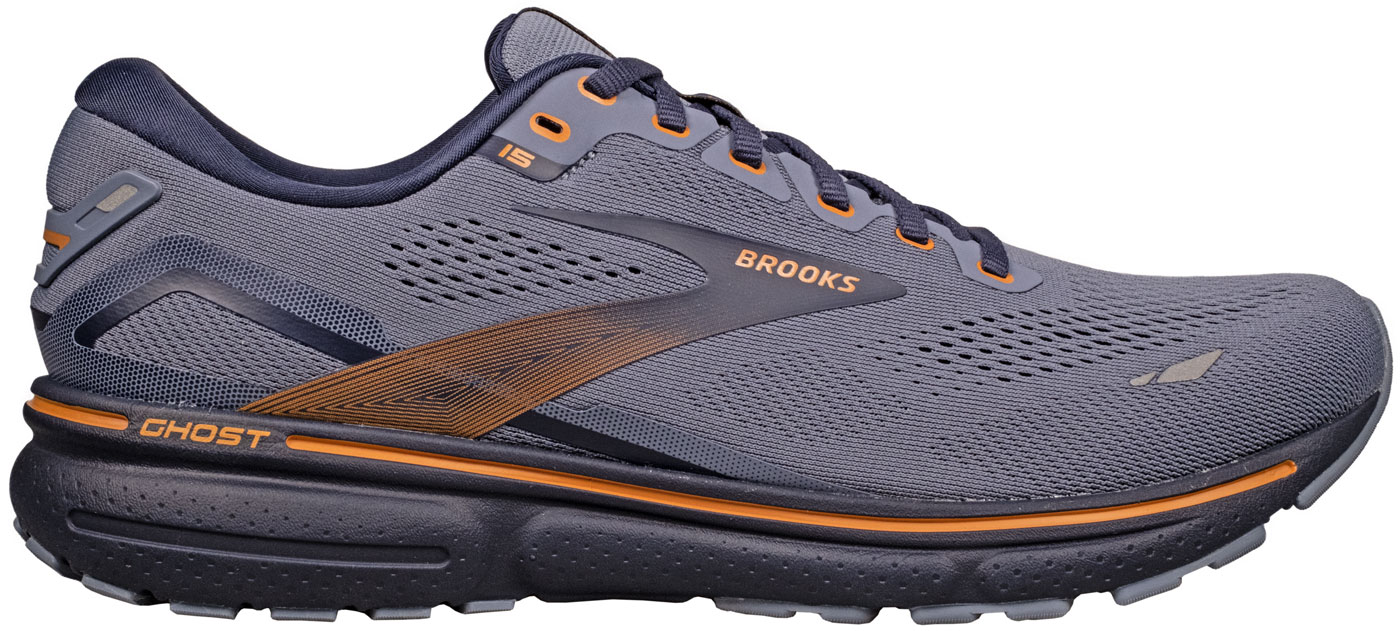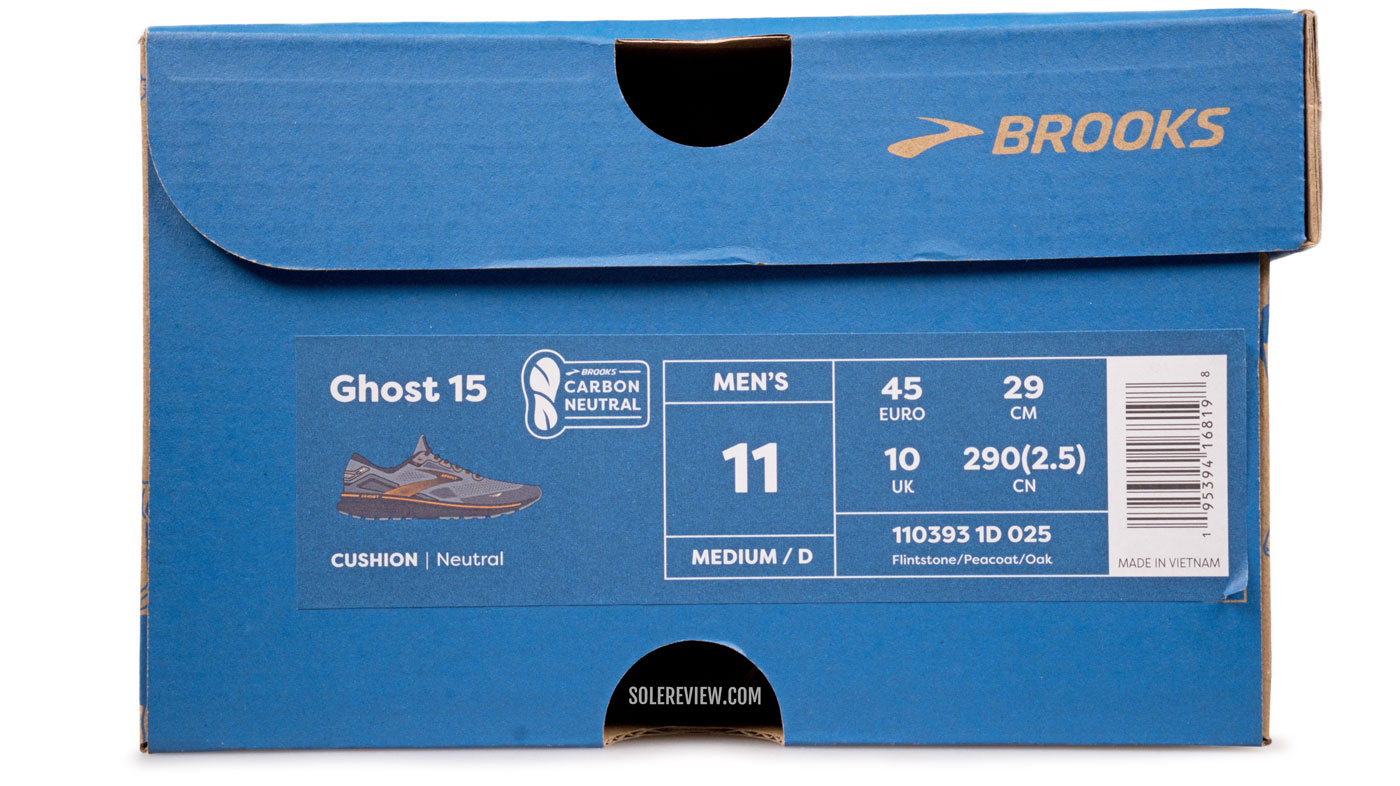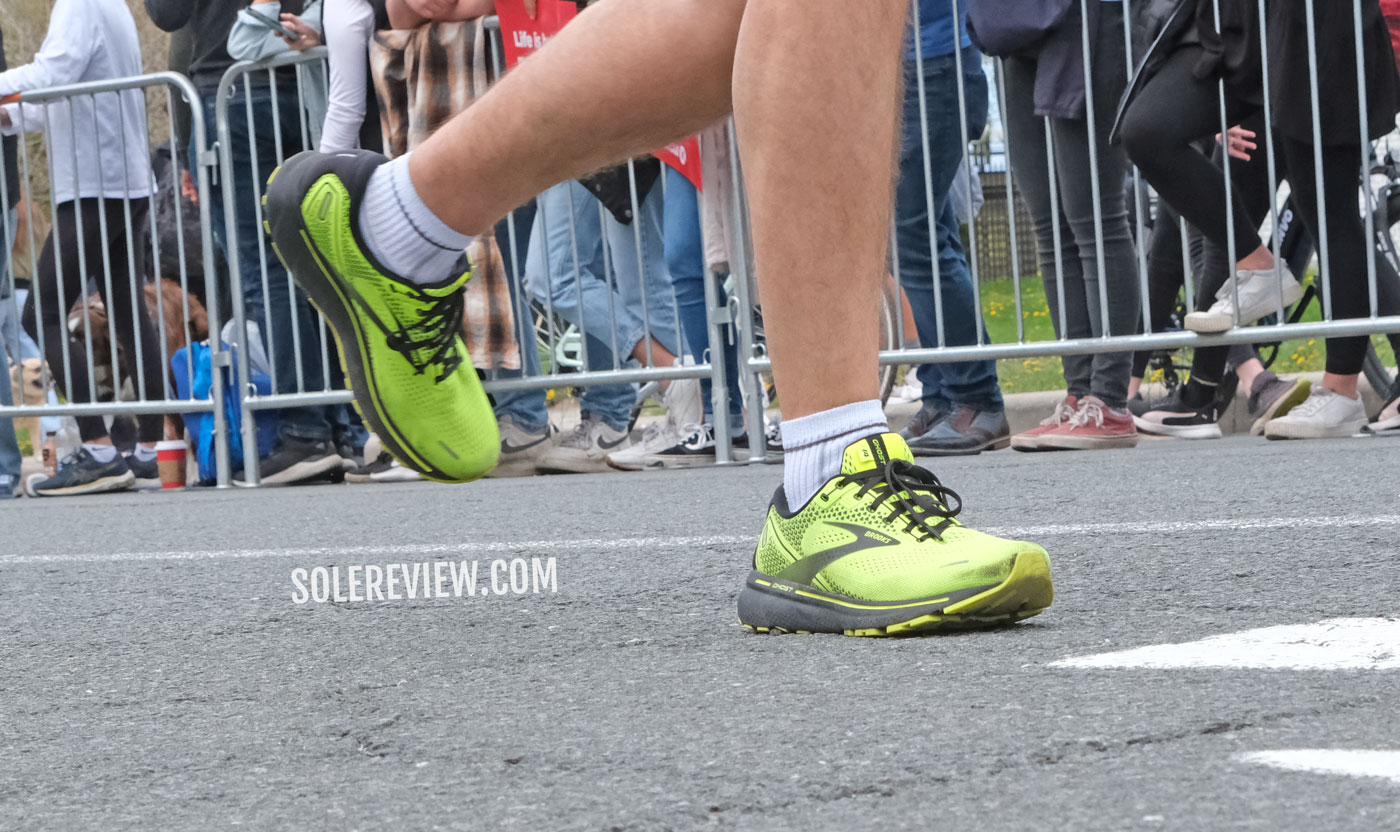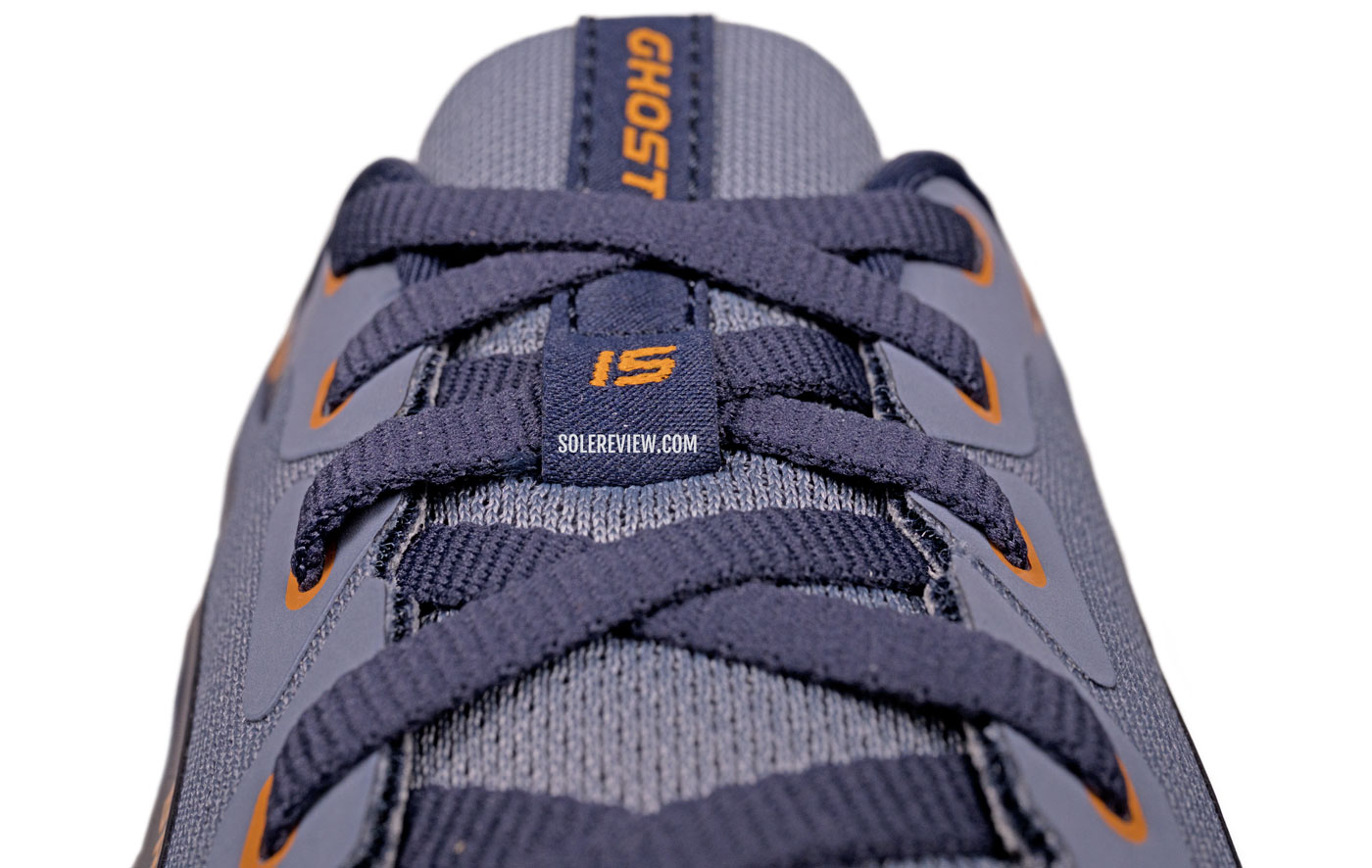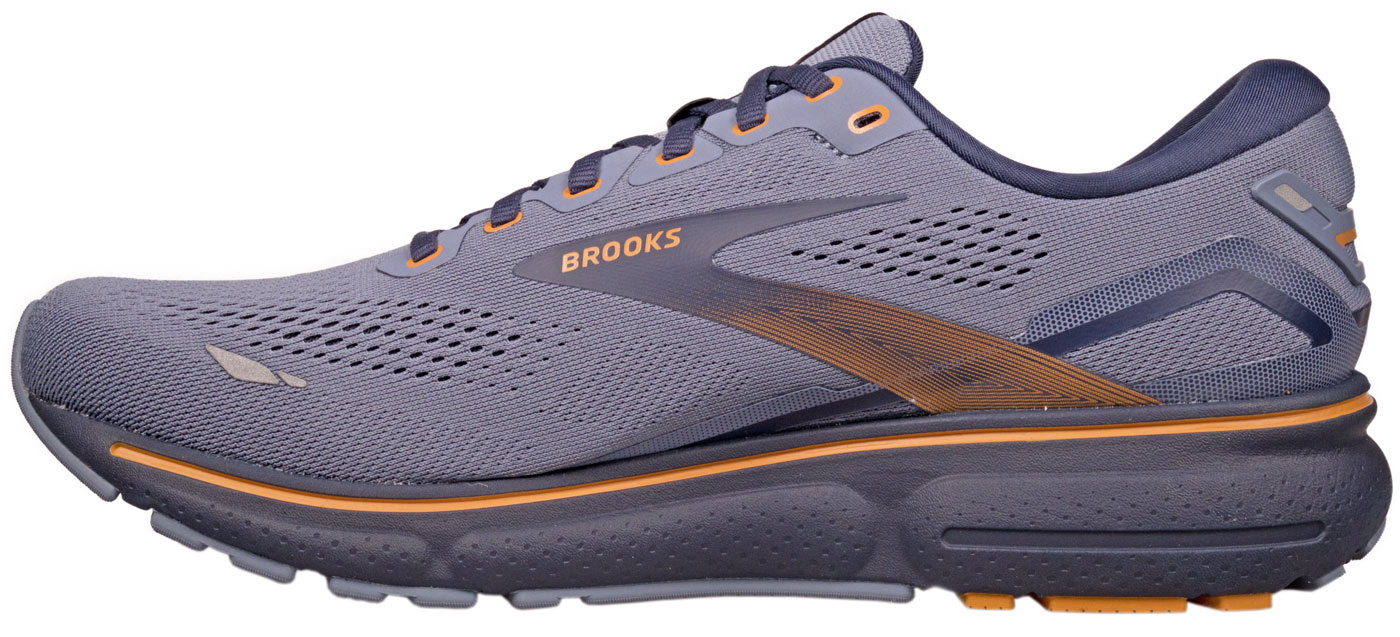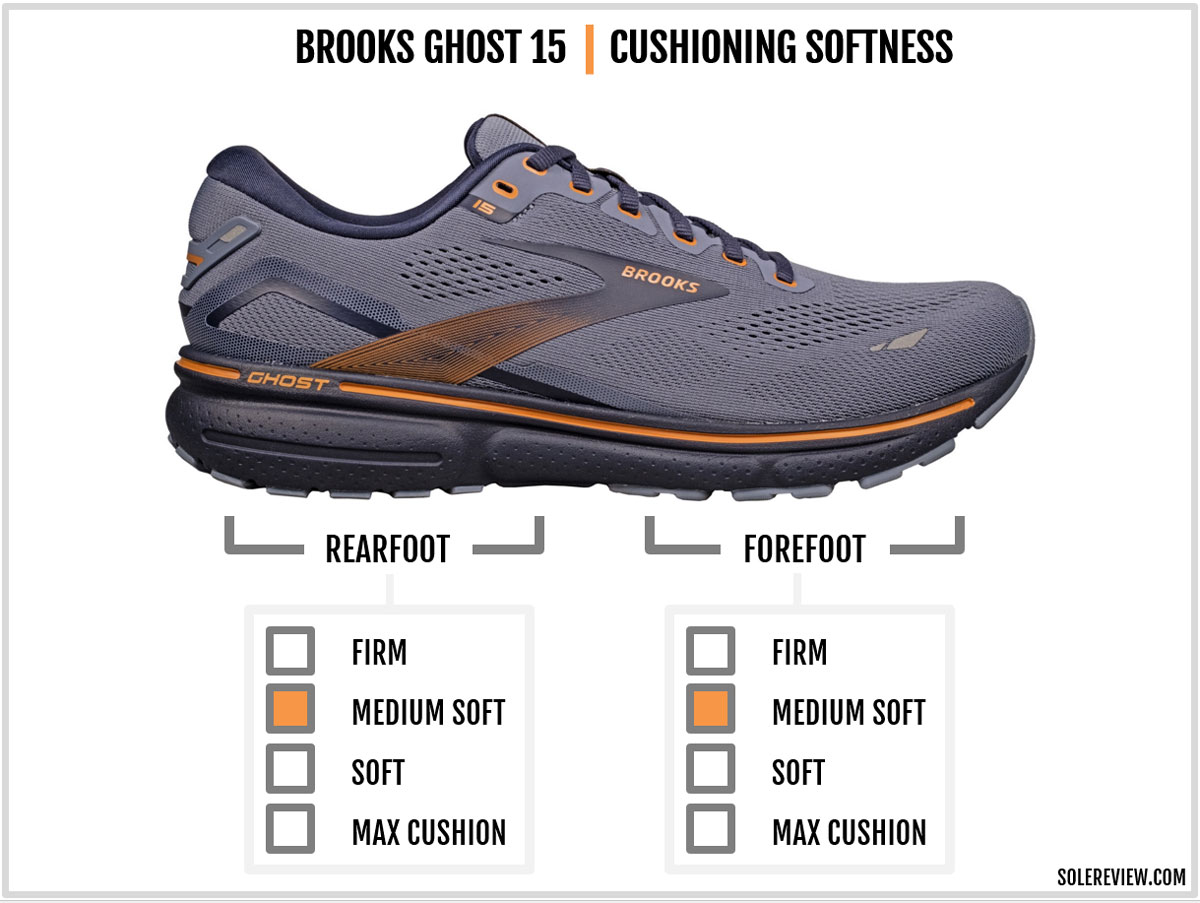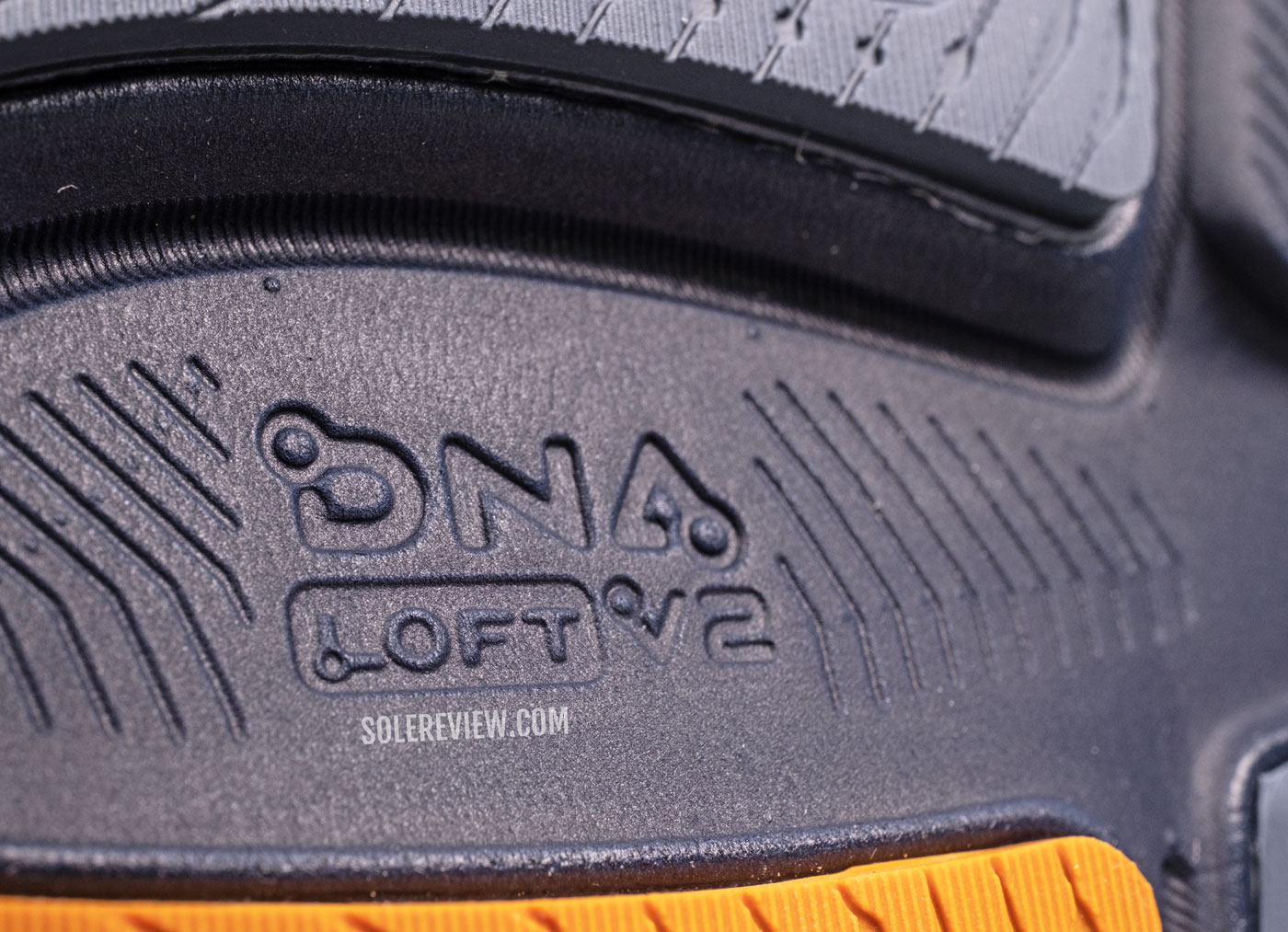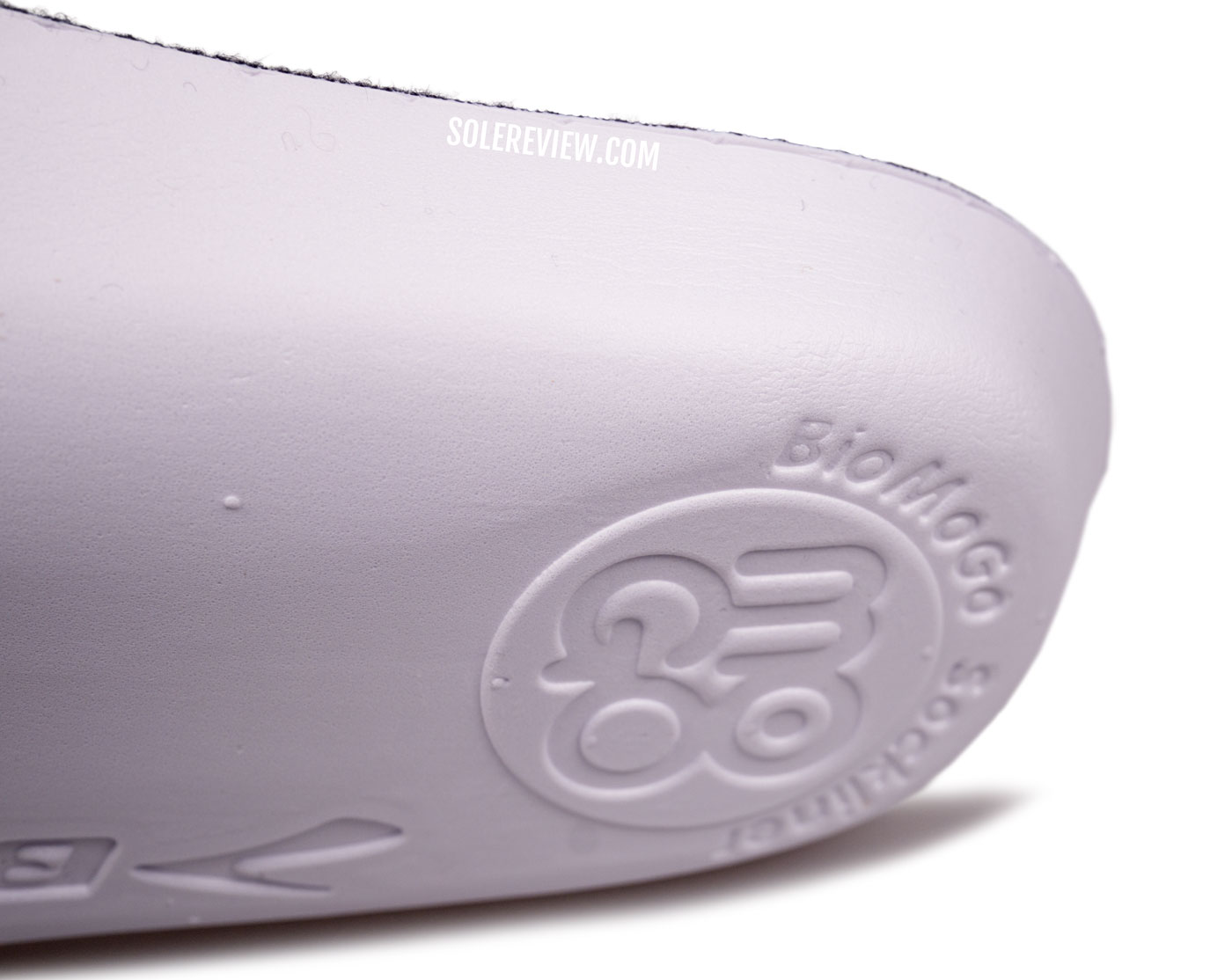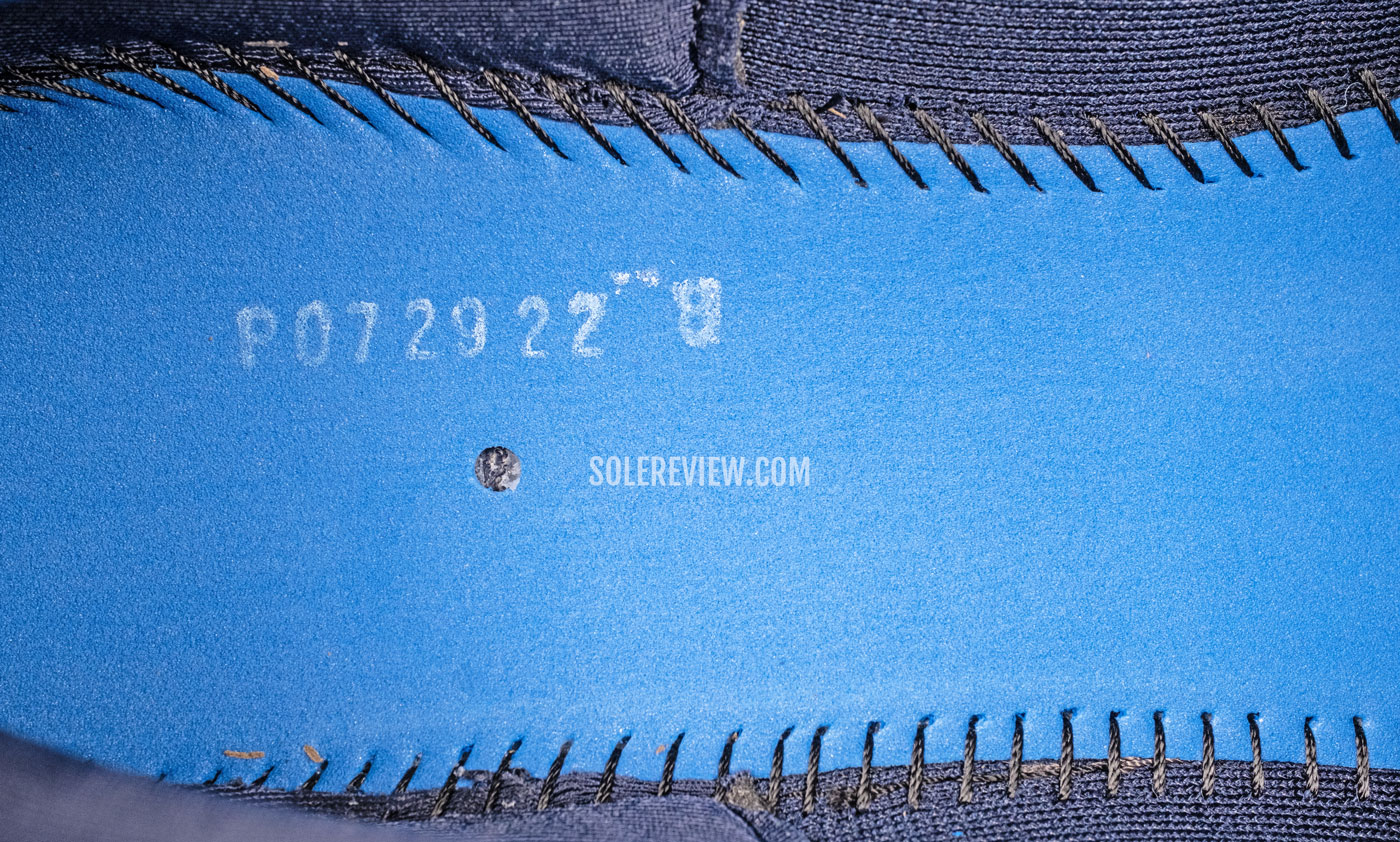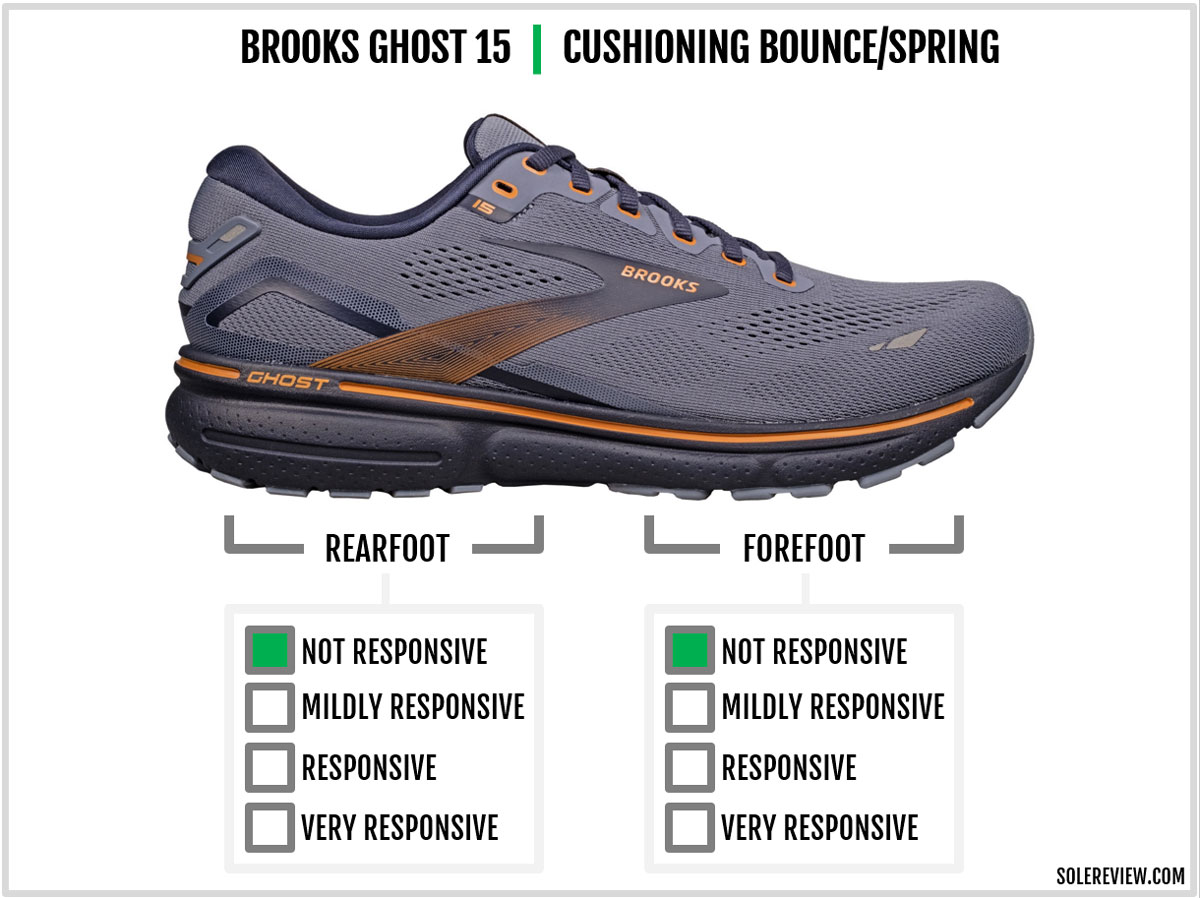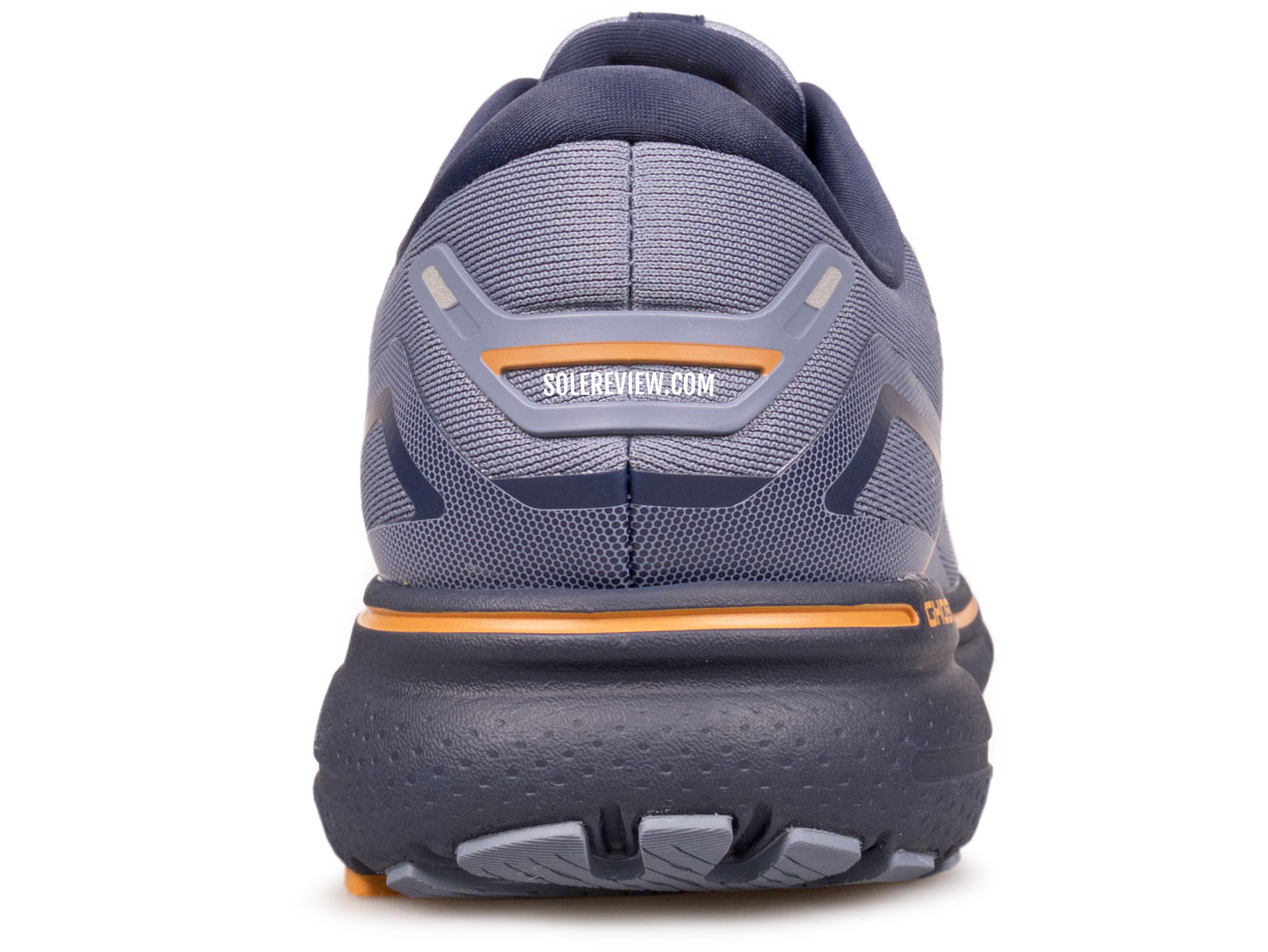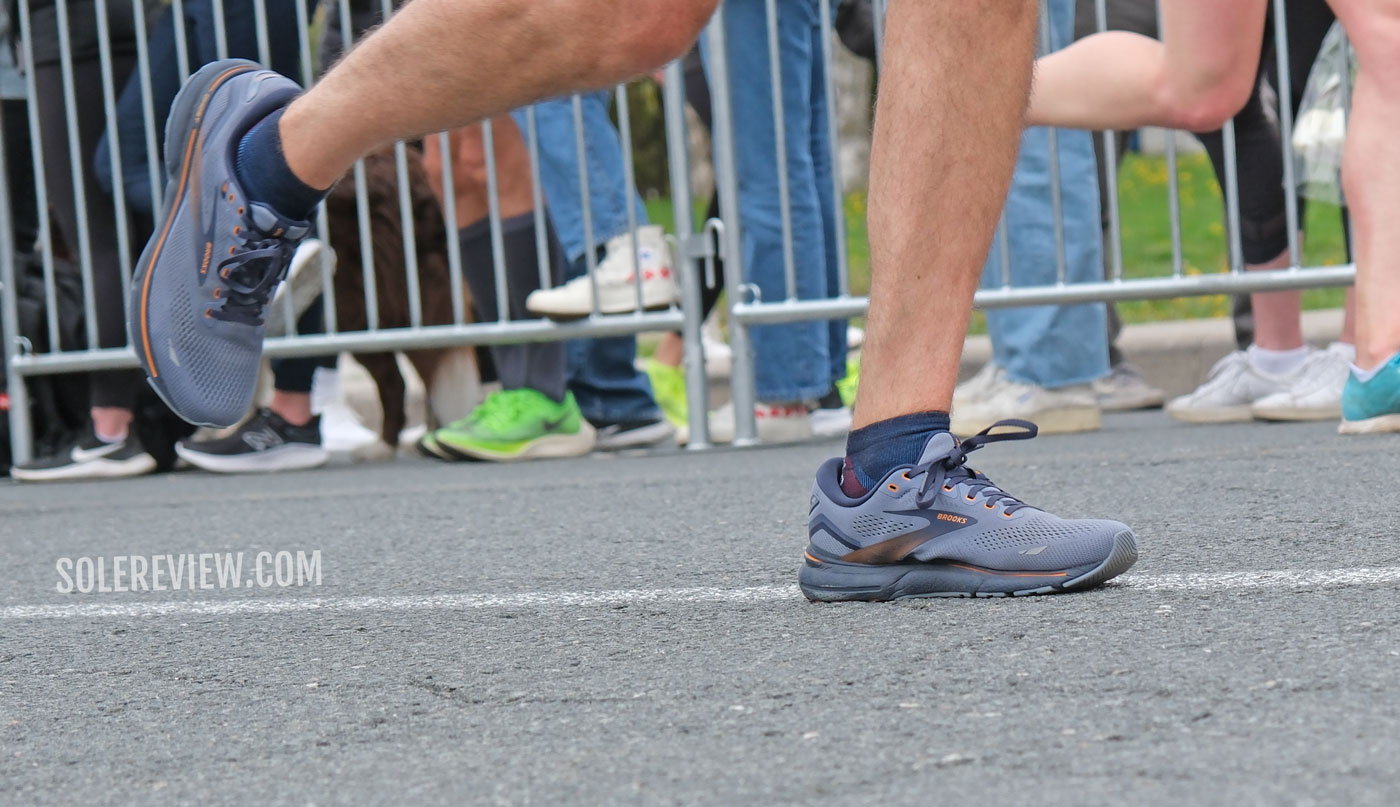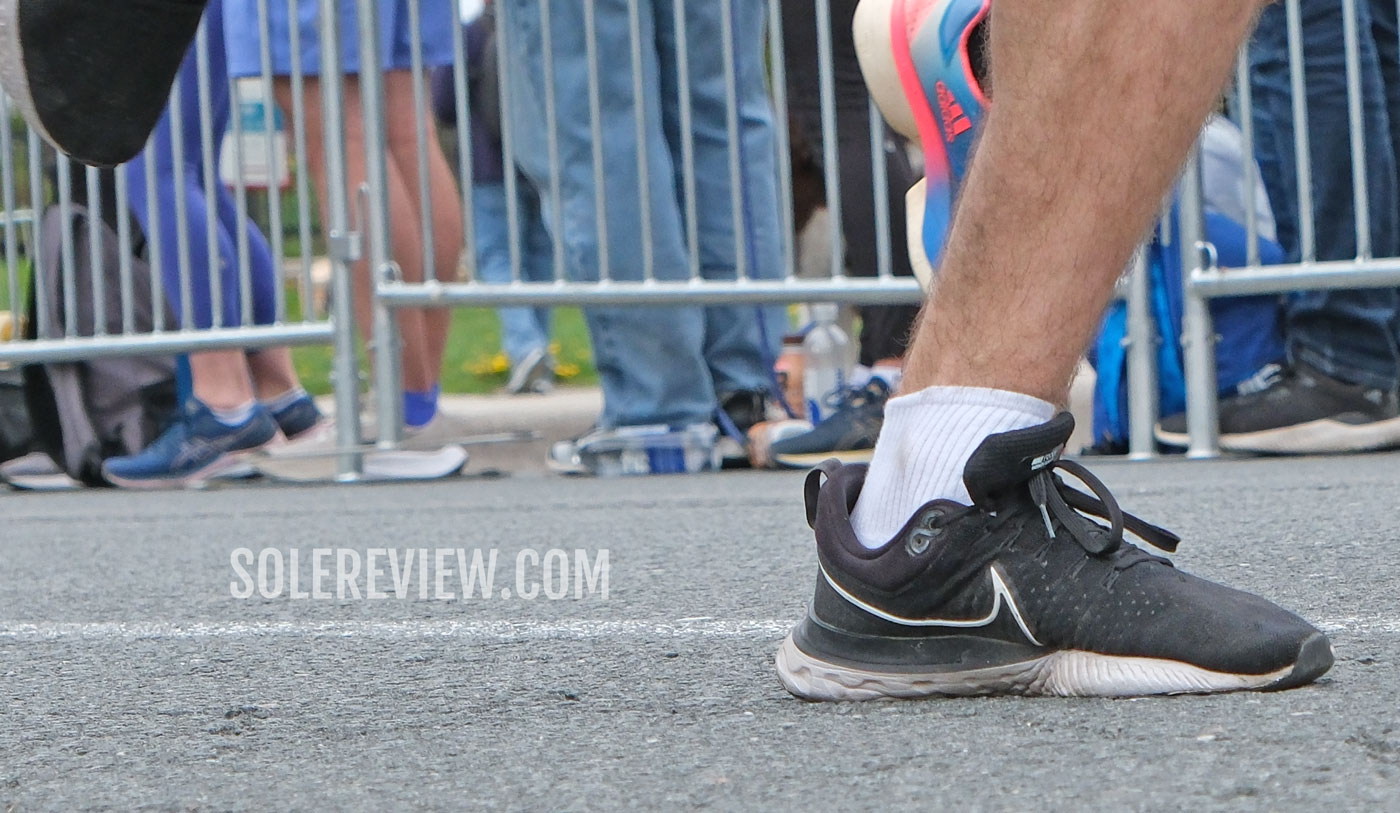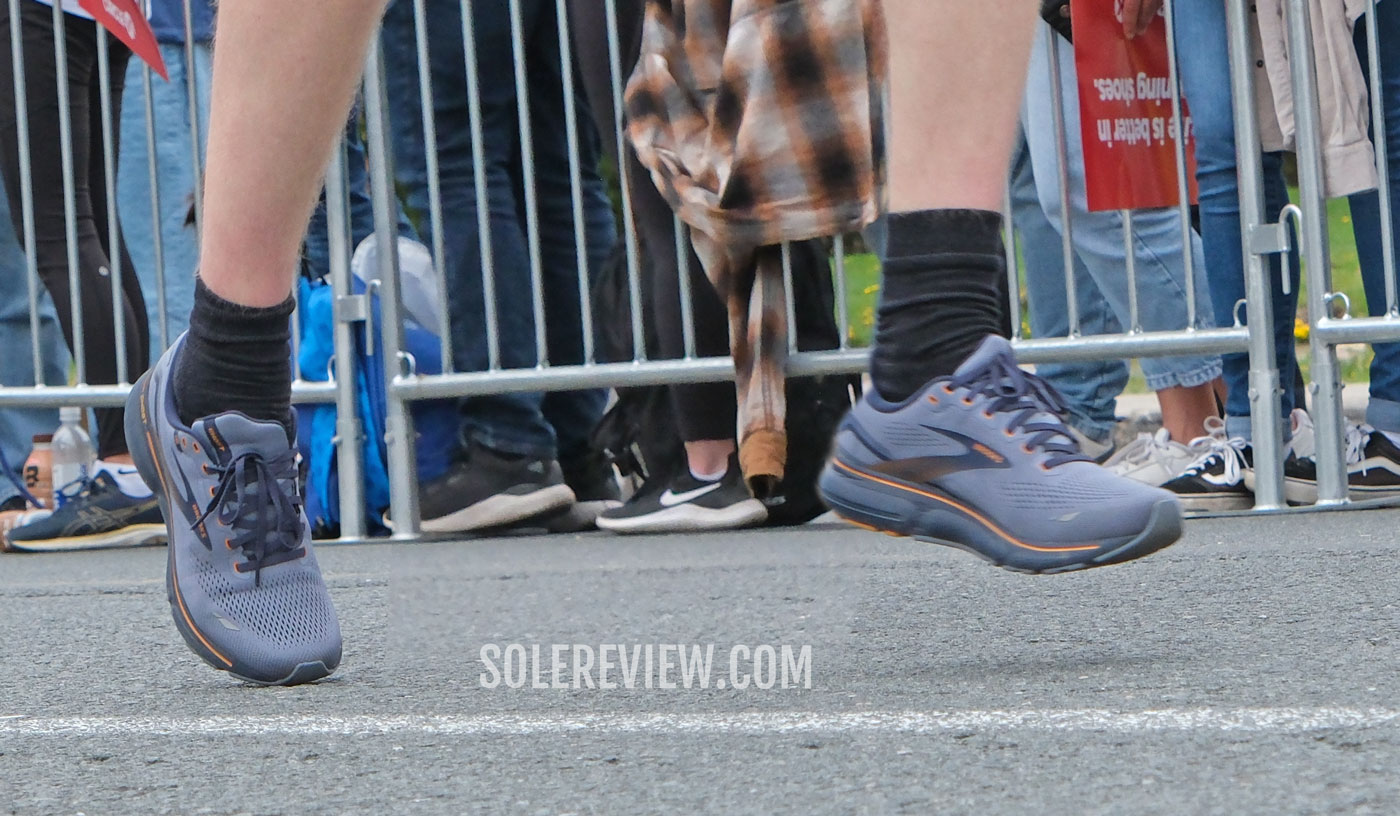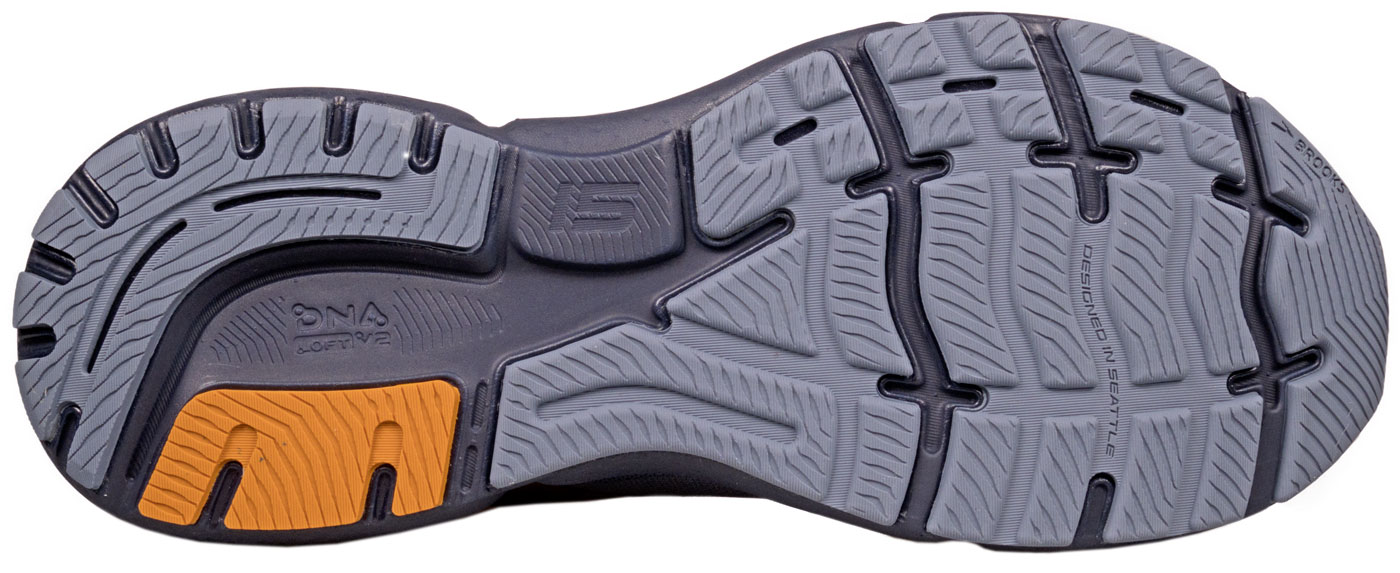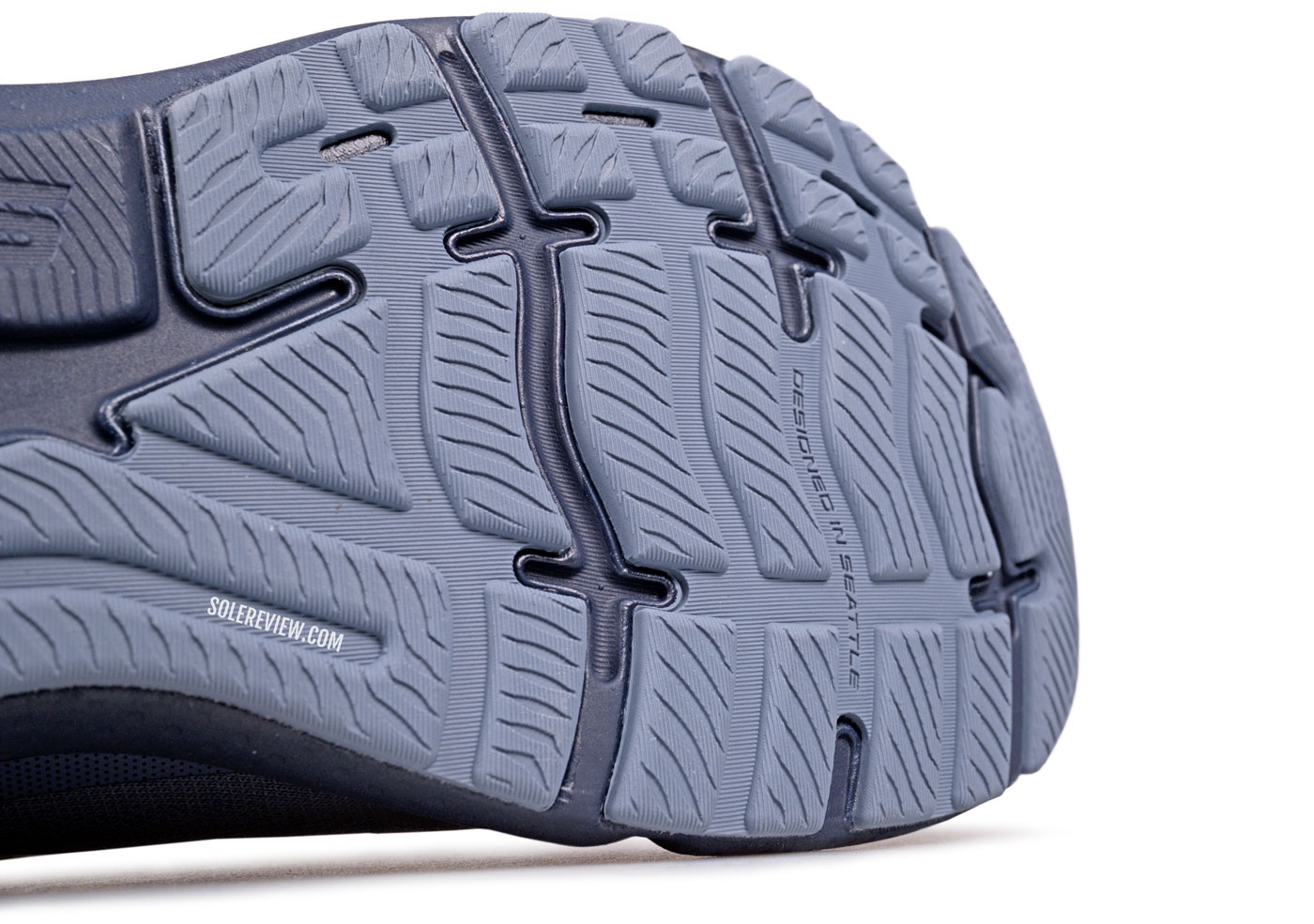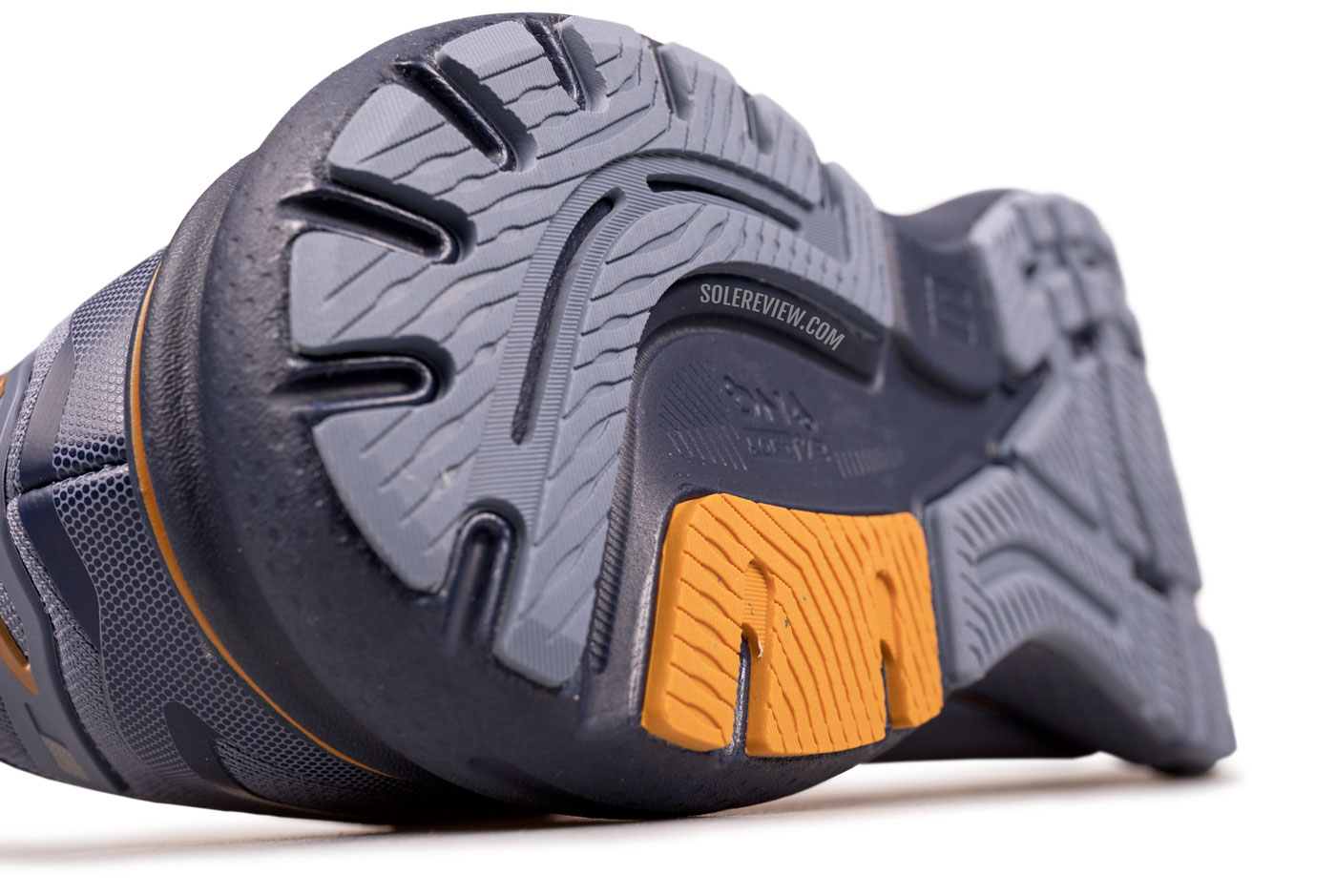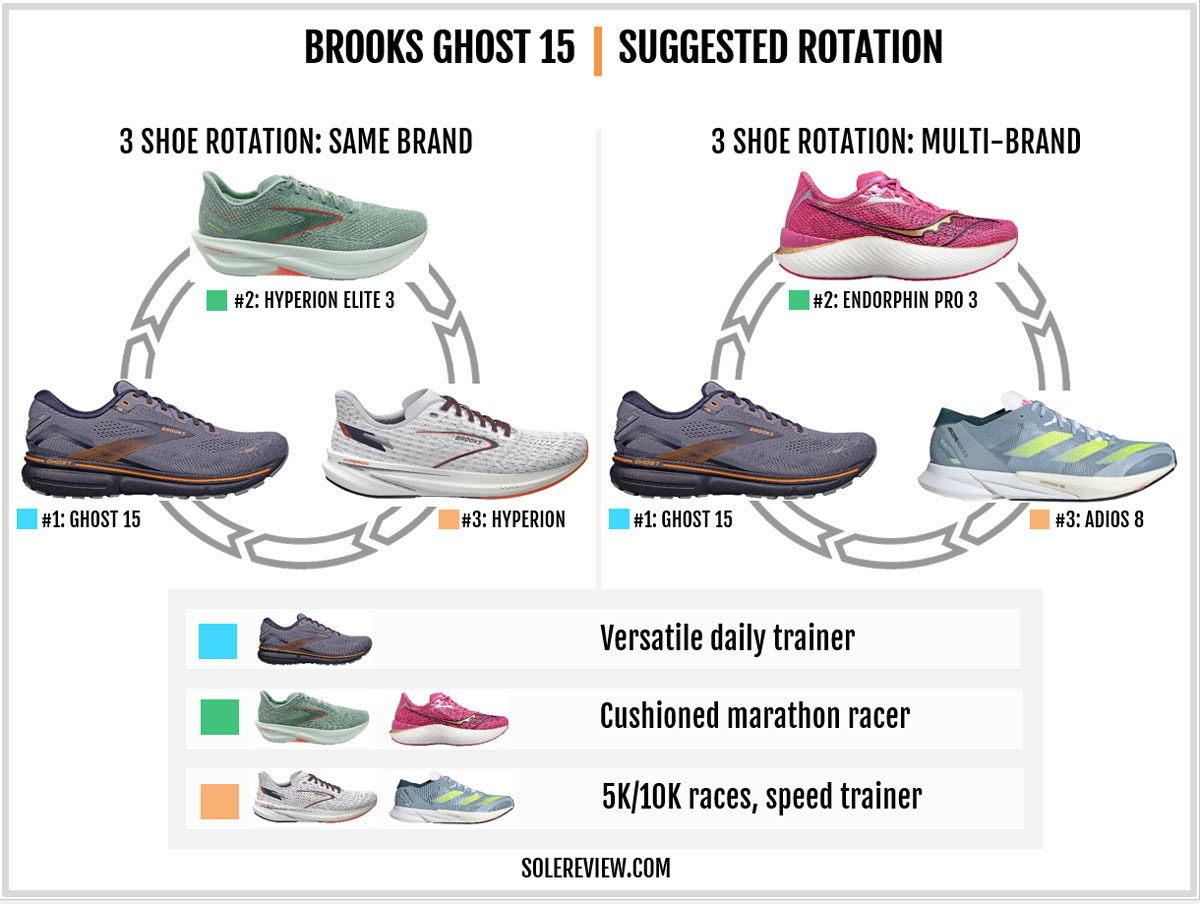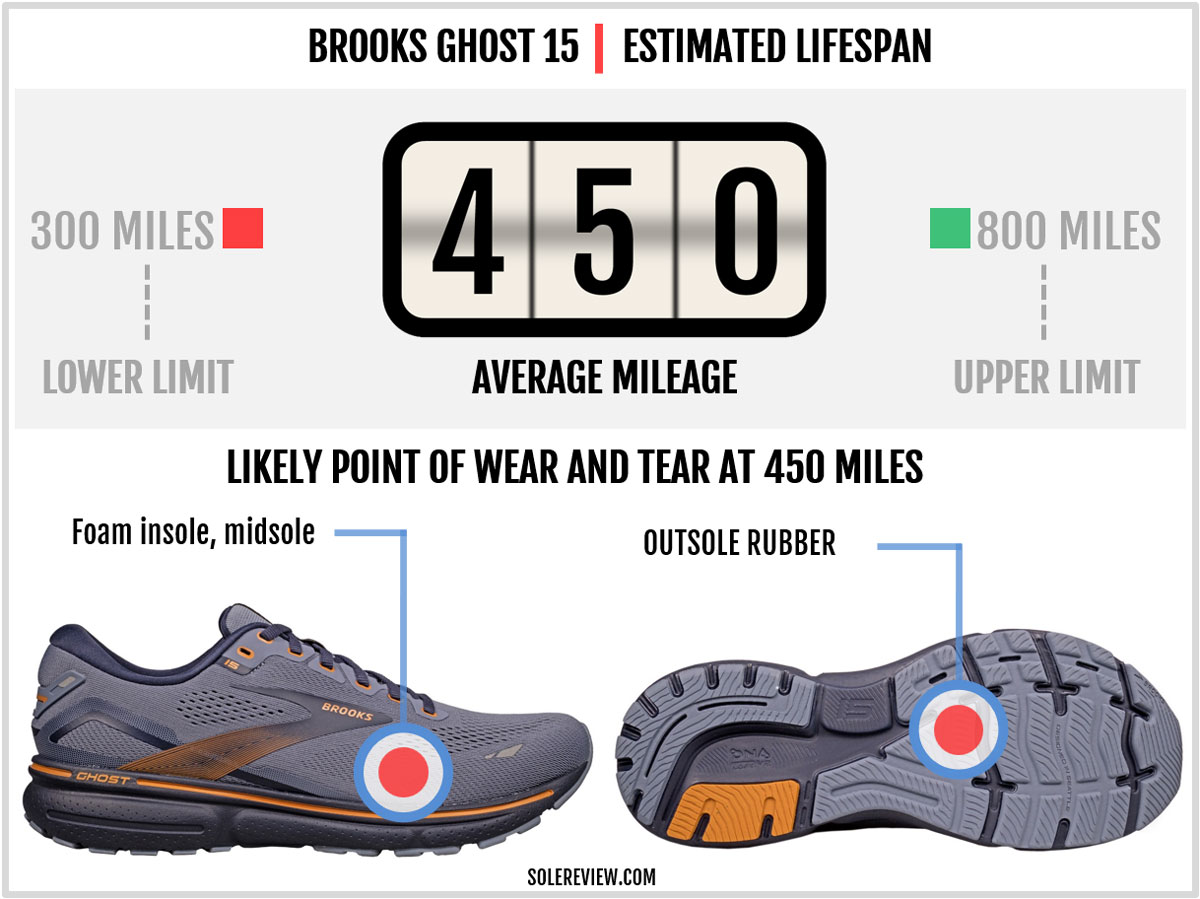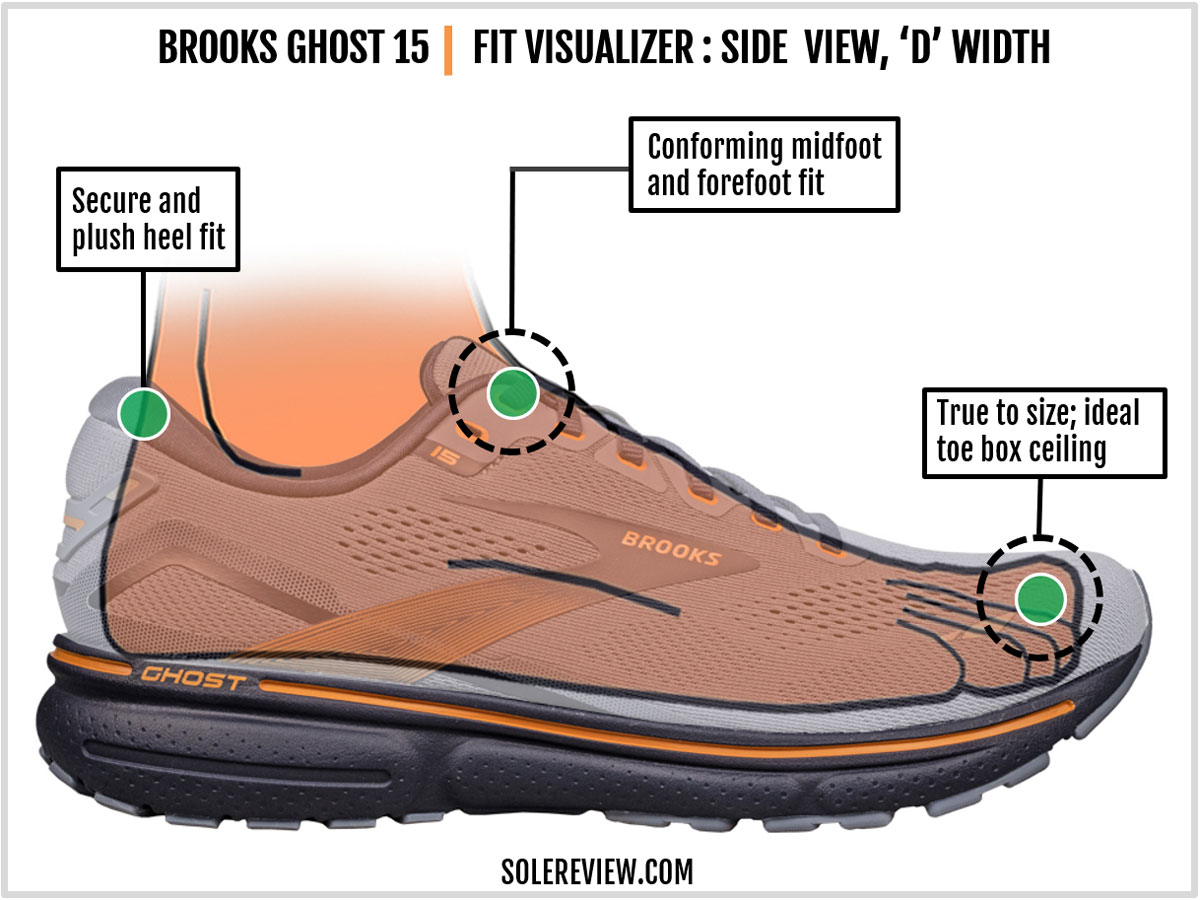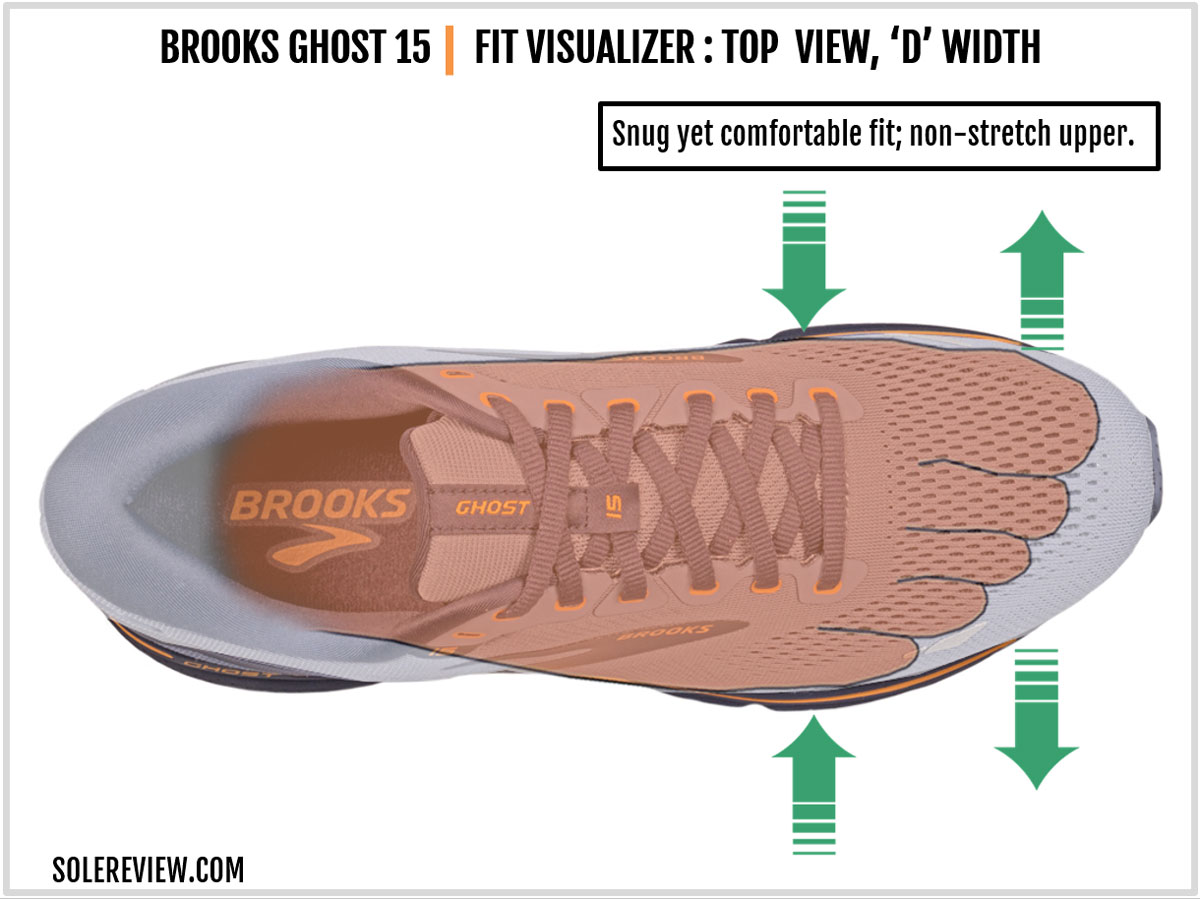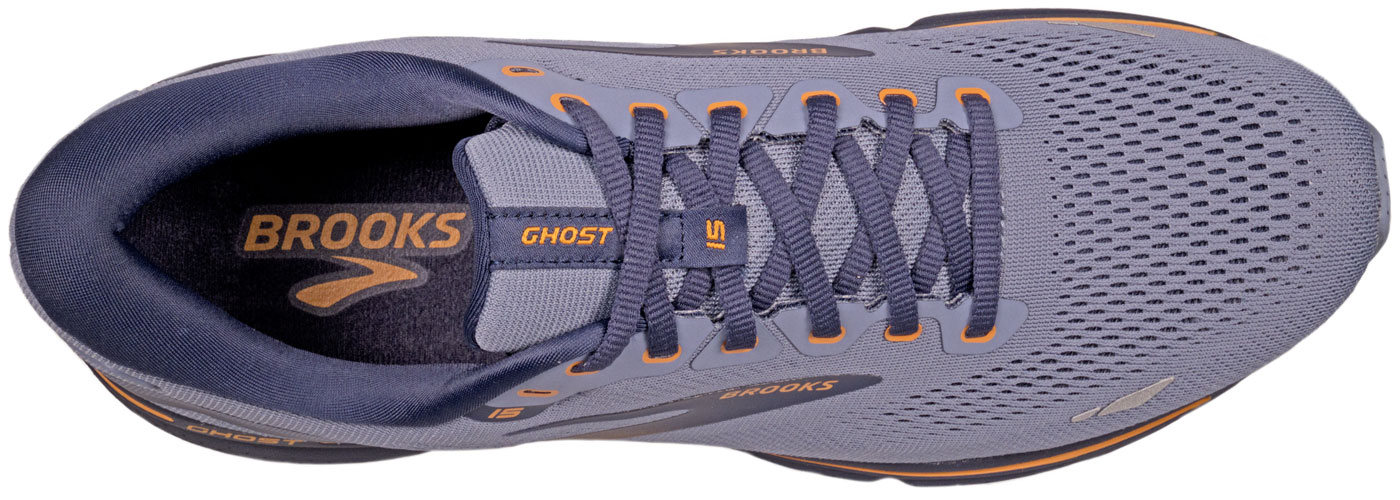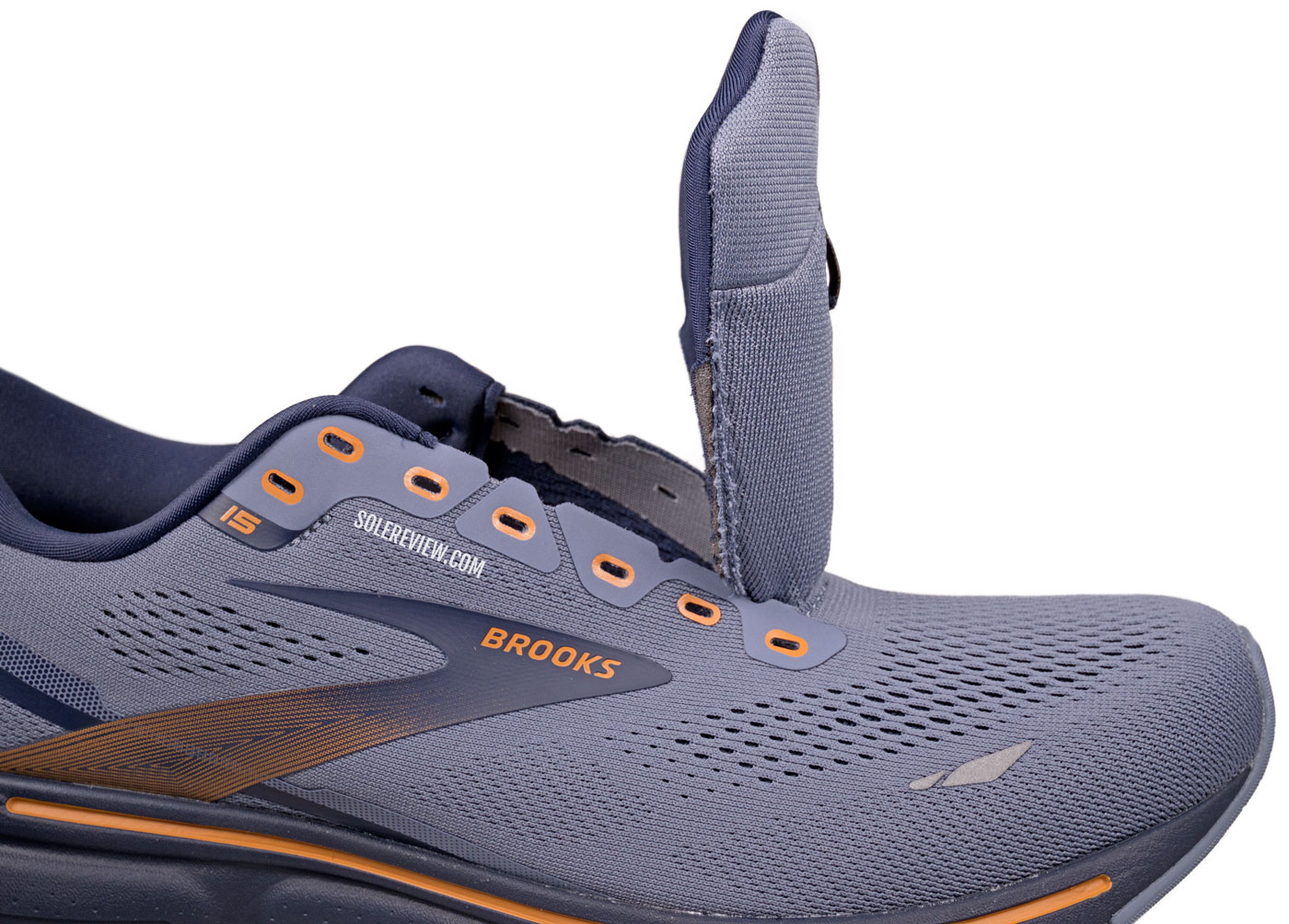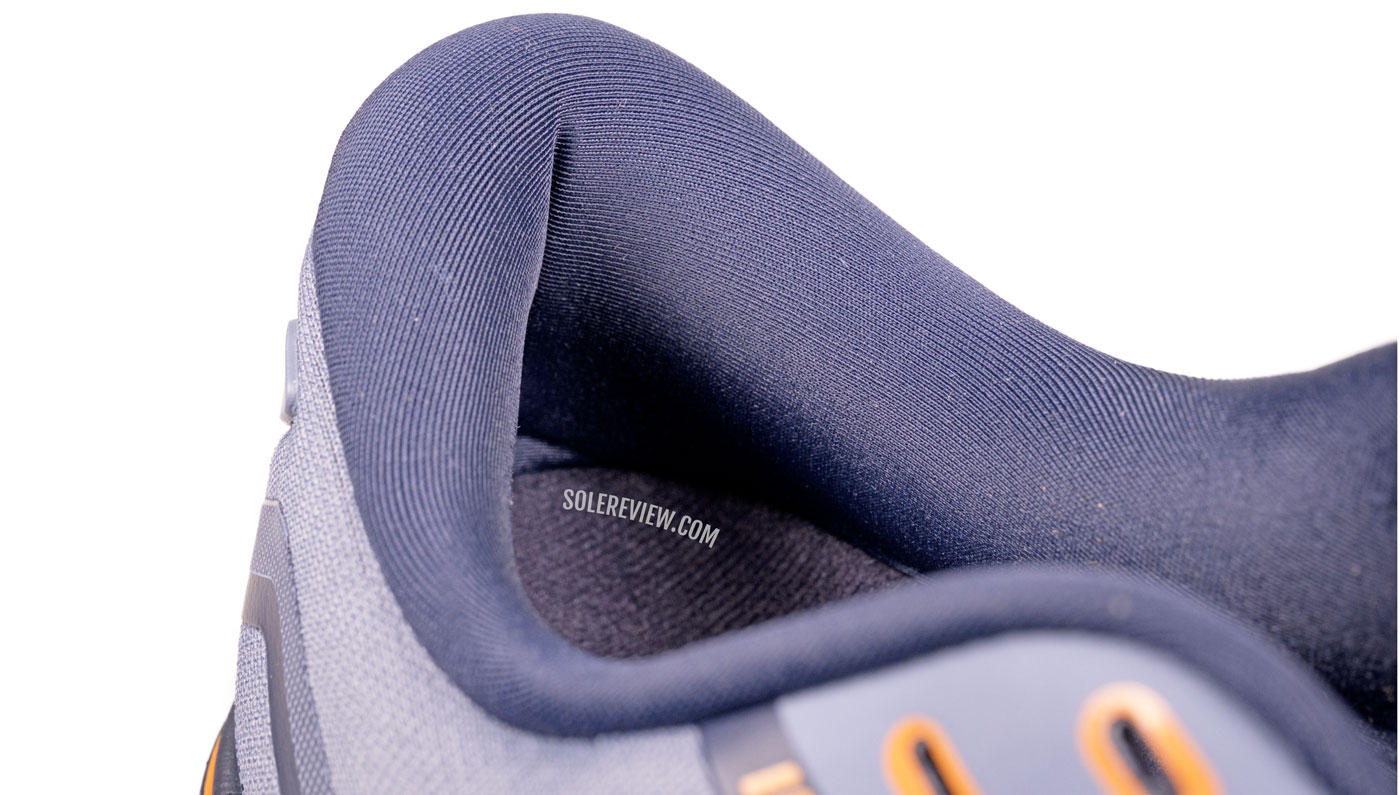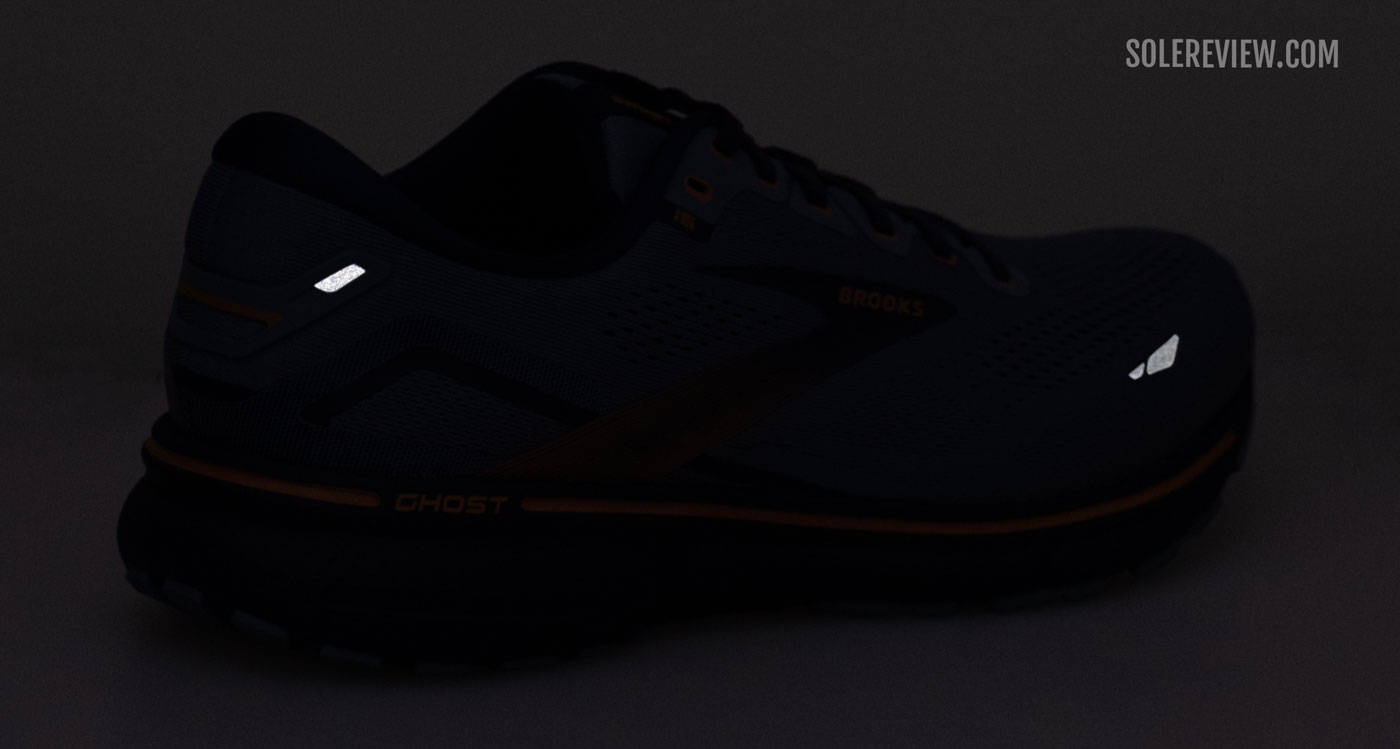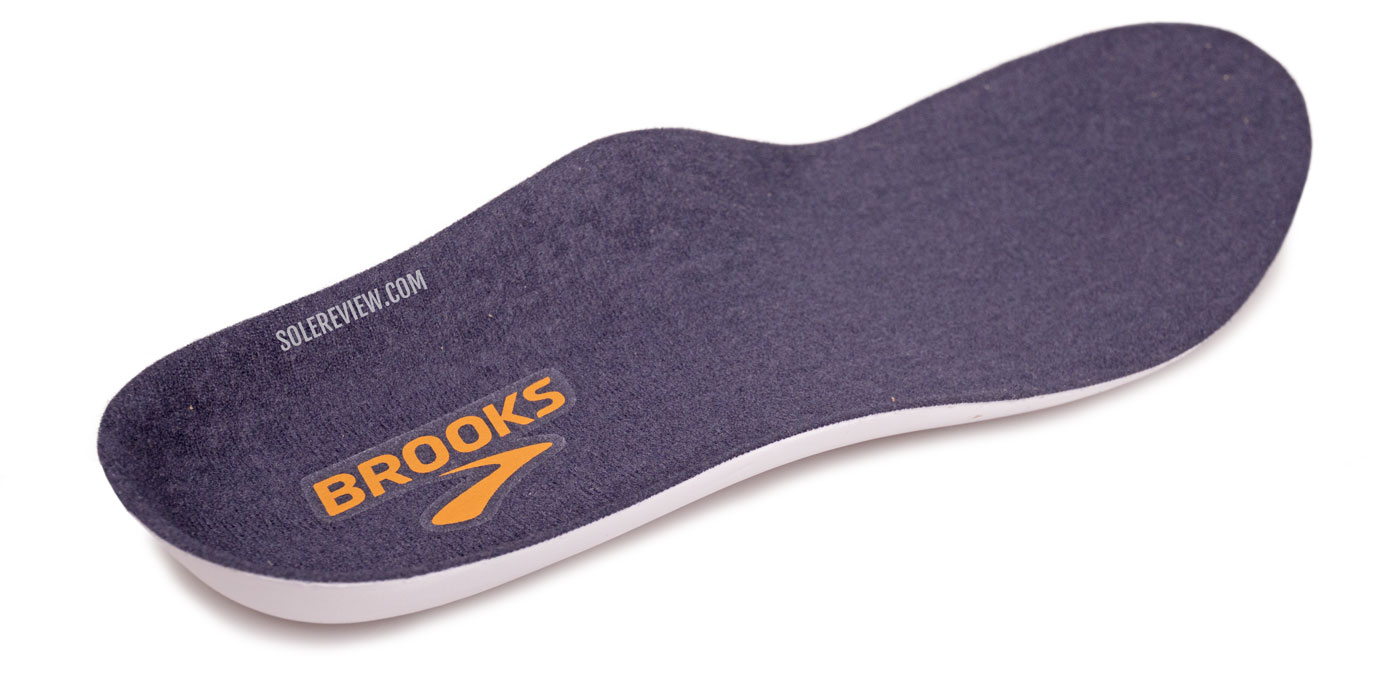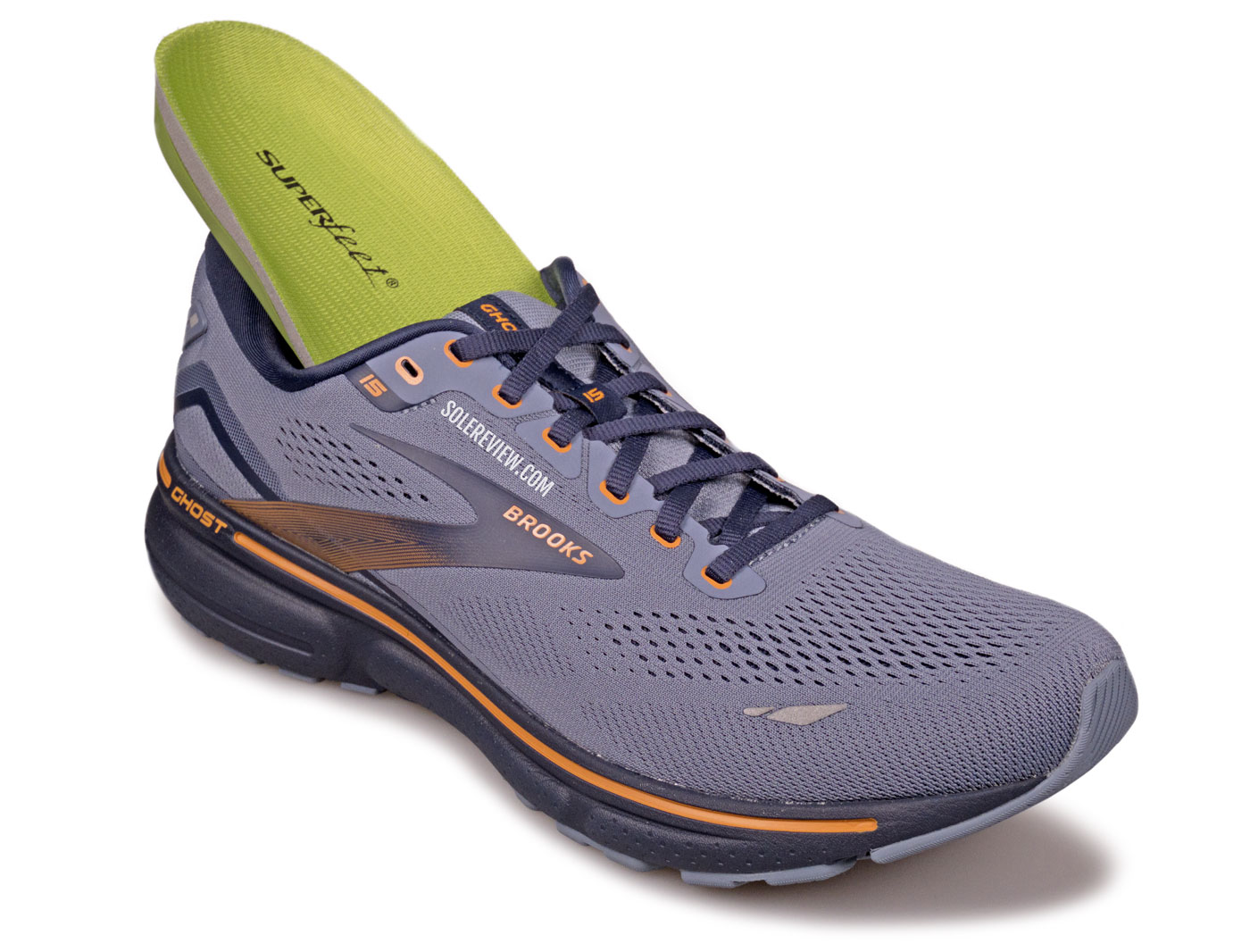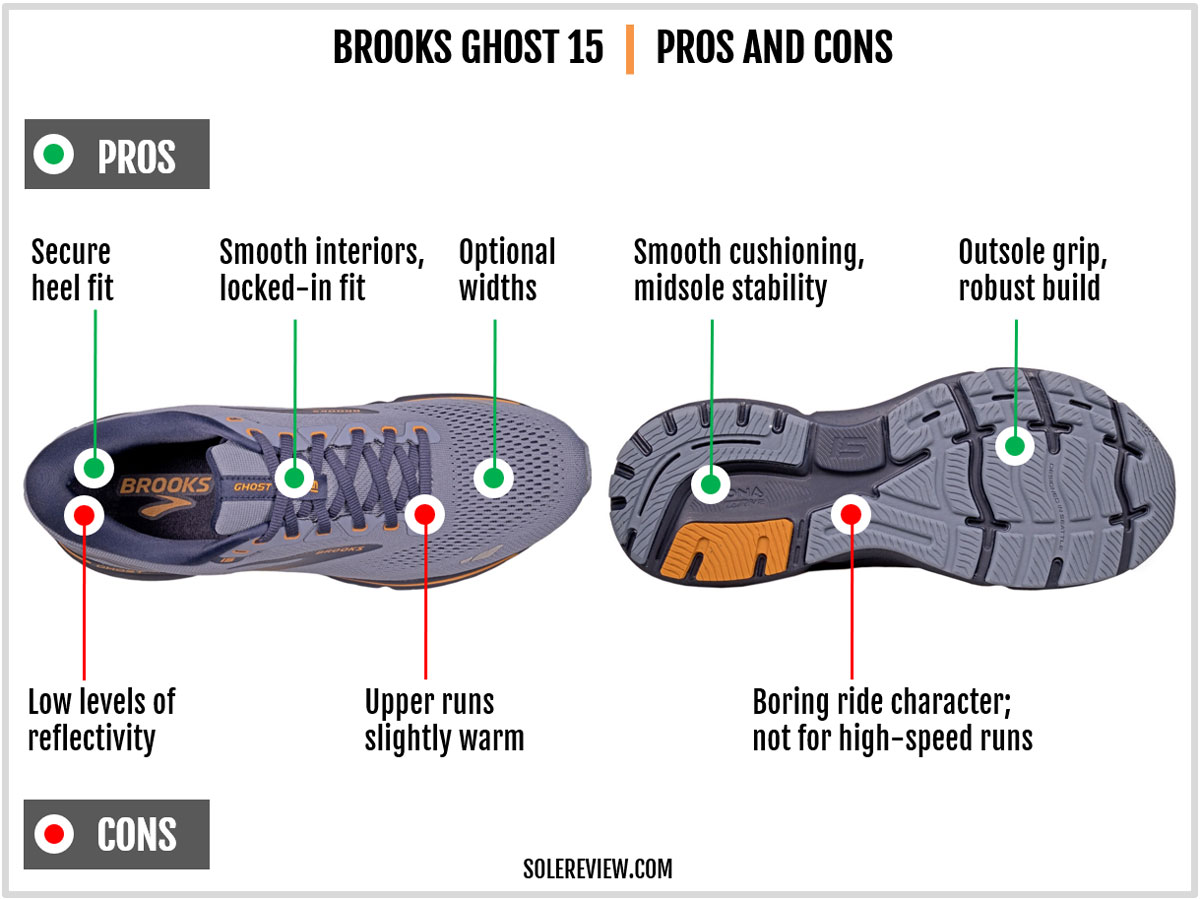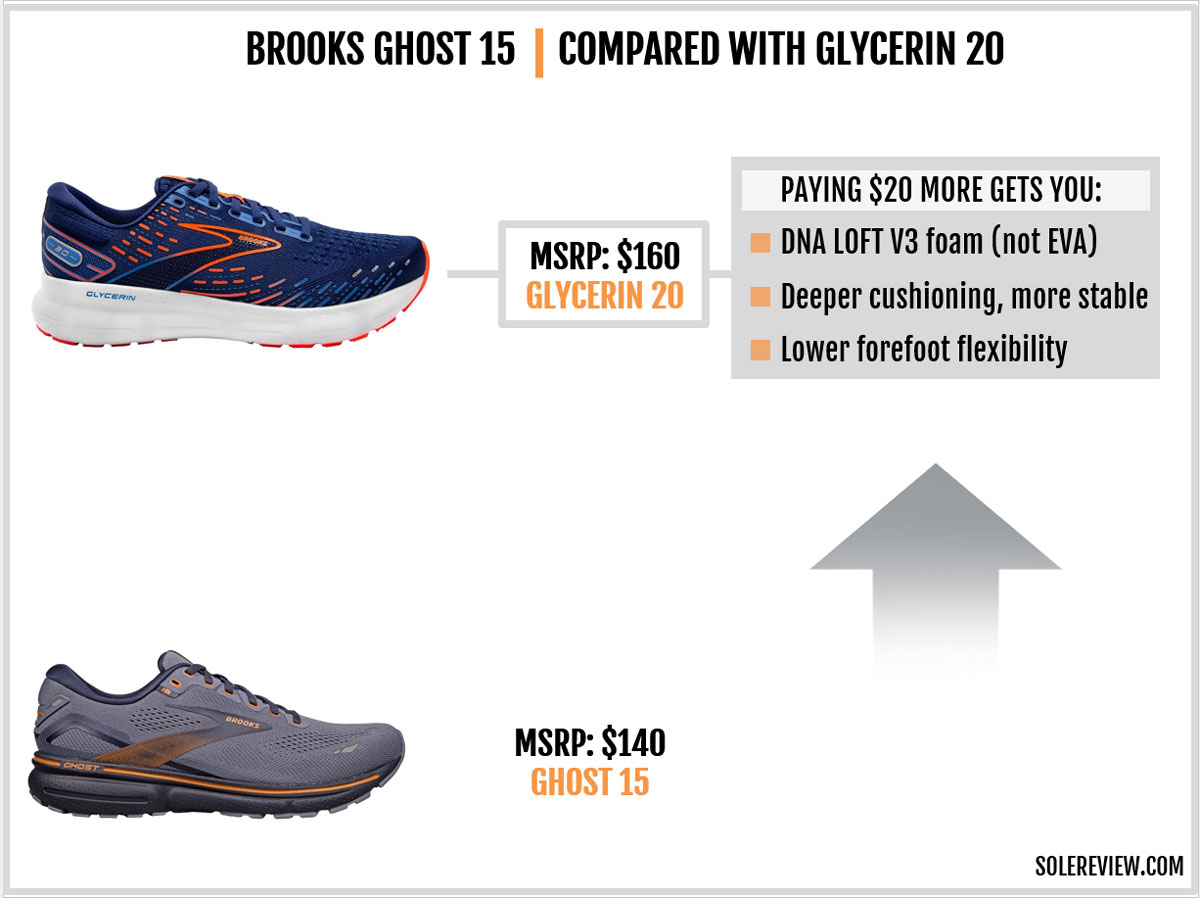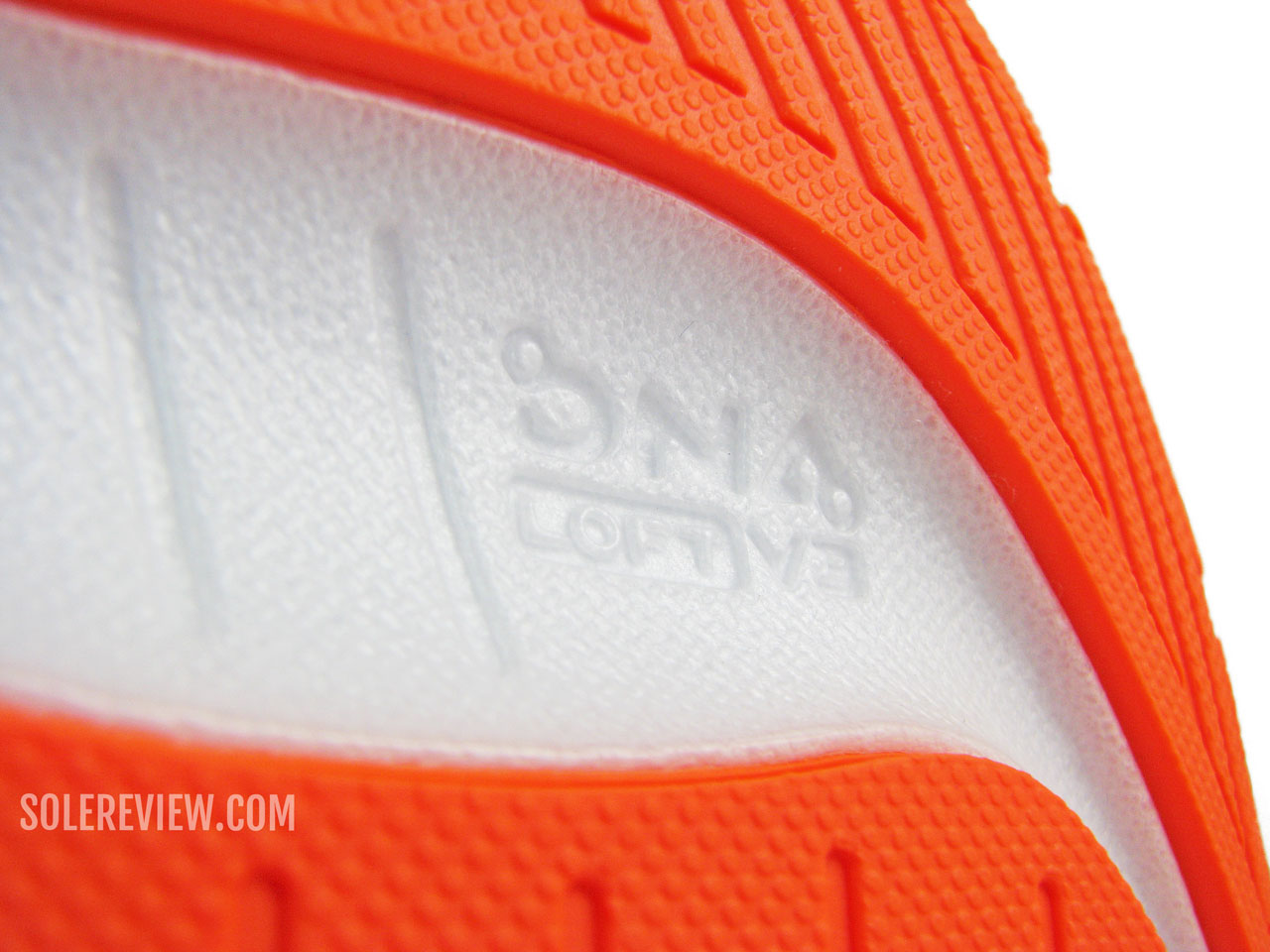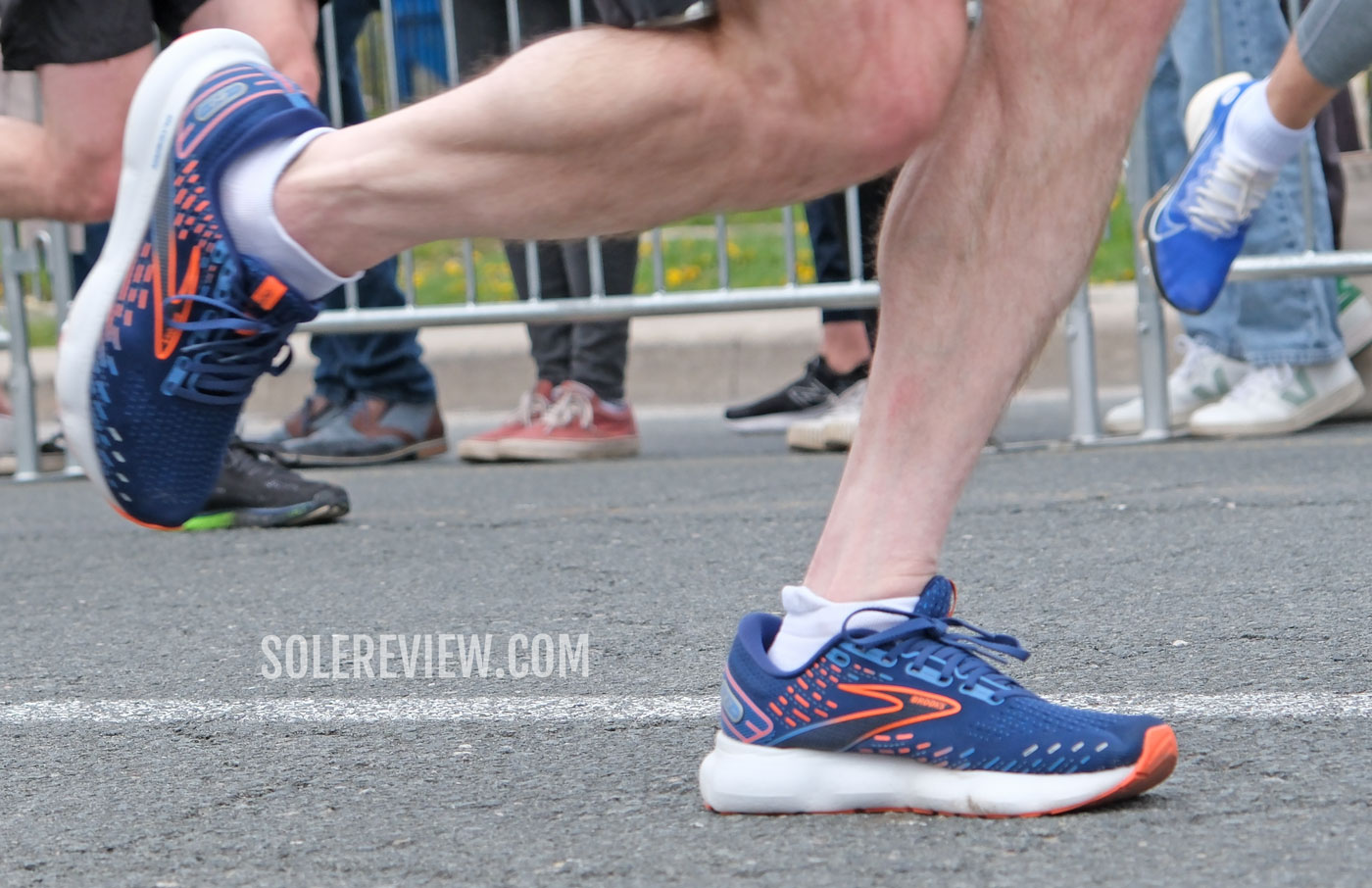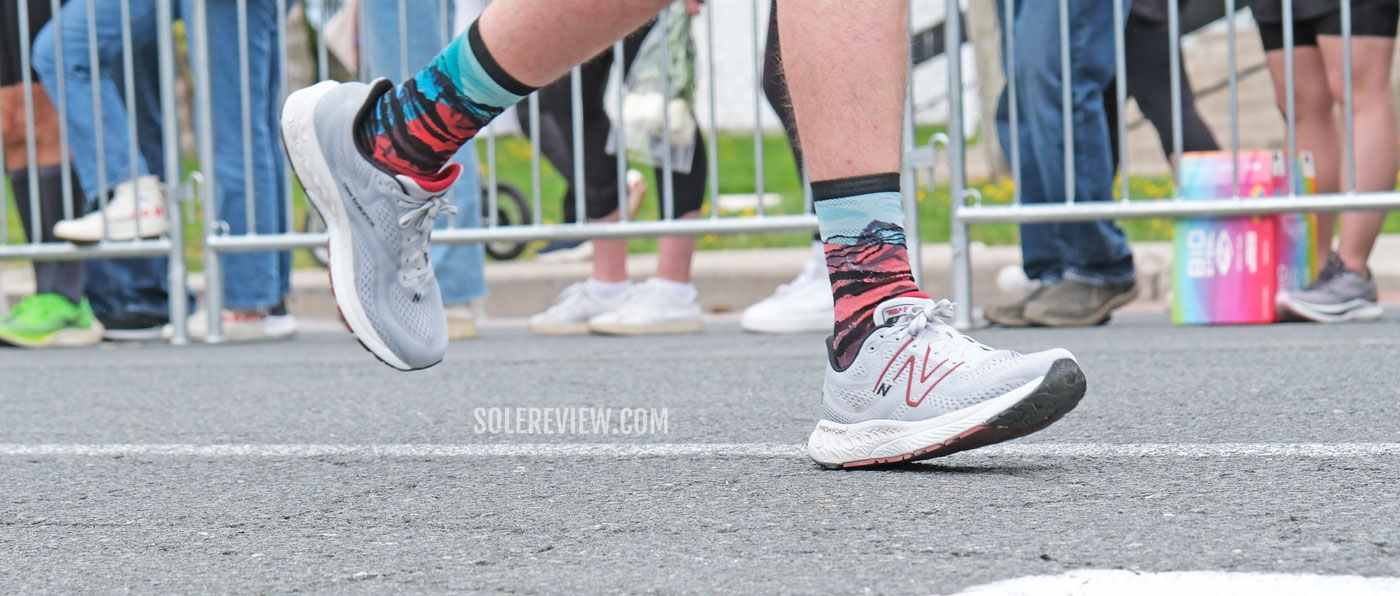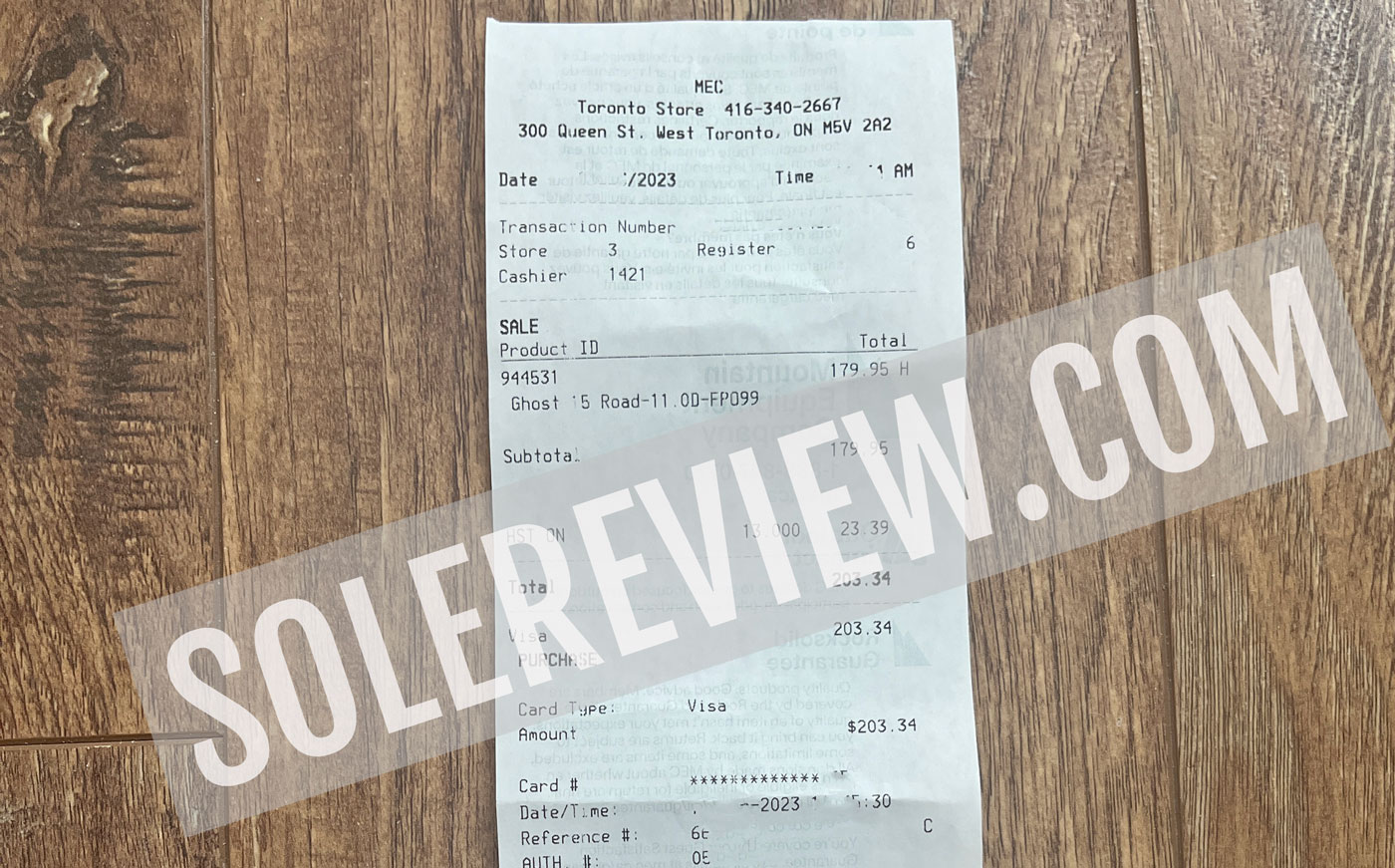
For this review, Solereview paid the full retail price for the Brooks Ghost 15. The amount is in Canadian Dollars.
In this review:
SUMMARY AND VERDICT
If you have even the slightest interest in ice cream, you should try Ben & Jerry’s Cherry Garcia. It’s a Vanilla ice cream with cherries and fudge flakes. The sweet bits are a flavorful contrast against the blank canvas that is the Vanilla ice cream.
There’s a certain element of discovery with every scoop that makes consuming a pint of Cherry Garcia a delightful – and borderline exciting – culinary experience.
And then there’s the Häagen Dazs Vanilla ice cream.
It’s an excellent store-bought, mass-produced ice cream that is relatively affordable when compared to artisanal ice cream. There are no fancy bits in here; just the predictable hint of Vanilla against the overpowering backdrop of cream, milk, and sugar. A good Vanilla ice cream has a level of refinement that’s missing in other novelty ice creams.
Despite its boring personality, Vanilla commands nearly 30% of all ice cream revenue. It’s a ‘dumb reach’ flavor that’s liked by all ages, and is easily available in most places. It also goes remarkably well as an accompaniment with other desserts or fruits. As a flavor, Vanilla may not be as exciting as the Cherry Garcia, but its versatility is beyond question.
You probably know where this is heading.
The Brooks Ghost 15 is not Cherry Garcia, but the running shoe equivalent of Vanilla ice cream. It’s a dependable daily trainer that’s sufficiently comfortable for a half-marathon. The cushioning is neither too soft nor too firm. The true-to-size upper has excellent proportions.
The Ghost 15 also complements other running shoes when part of a rotation. It is durable and doesn’t cost the earth. It is available in most sporting goods stores and online store-fronts. It has four widths. You get the idea – the Ghost is designed to be a crowd-pleaser.
The Ghost 15 may not be the most exciting running shoe, and some may even find it boring. Having said that, there’s a certain refinement in this boredom. Nothing on this shoe feels out of place, and there are little to no flaws.
Like any Vanilla ice cream, Brooks is in the business of predictability. Unless it’s a brand-new intro or a one-off like the Aurora BL, Brooks running shoes are easy to read. If someone could time-travel to 2014 and give us a pair of Ghost 15, we would be surprised to learn how remarkably similar it is to the Ghost 7.
THE BROOKS GHOST 15 COMPARED WITH GHOST 14
The Brooks Ghost 14 and Ghost 15 are so similar, it doesn’t matter which shoe you get. If you have the opportunity to get the Ghost 14 for a discounted price, we recommend that you explore that option first.
Design-wise, the Ghost 15 has a ‘brand-new’ midsole, outsole, and upper design. While there are visible differences in the aesthetics between the two versions, that does not translate into a meaningful difference on the road.
Like the Ghost 14, the Ghost 15 has a similar true-to-size and secure fit. Though Brooks claims that the Ghost 15 uses DNA Loft V2, the ride character is more or less than same as before.
The pricing hasn’t changed; the Ghost retains its $140 MSRP.
THE MIDSOLE DESIGN AND RIDE EXPERIENCE
The Brooks Ghost 13 was the first in the series to feature a single-density midsole, and the Ghost 15 is based on a similar form factor. The versions before the Ghost 13 had a separate midsole crash pad. Some of the earlier versions even had a three-part midsole.
As expected, the single-density midsole design is smoother in its cushioning delivery. It’s also very neutral with no cushioning bias. The midsole design is balanced, with both the inner and outer sidewalls forming a supportive base.
Besides the neutral overtone of the midsole, there are three core ingredients of the Brooks Ghost 15’s ride character.
The first you should know is that the ride is not soft. It doesn’t feel wooden either. The DNA Loft (an EVA foam blend) is cushioned enough to filter the harshness of the road, but that’s all there is to it.
The Ghost has always relied on a combination of a removable insole and foam lasting to create a bed of step-in-softness, and that’s what we get this time as well.
The second characteristic of the Ghost 15’s ride is its ‘traditional’ on-road performance.
Unlike many recent running shoes, the Ghost 15 doesn’t have anything else to offer other than its medium-soft foam midsole. The midsole doesn’t have a rocker profile, nor does the DNA Loft V2 foam have any pep or bounce.
The cushioning is very one dimensional with nothing served on the side, so to speak.
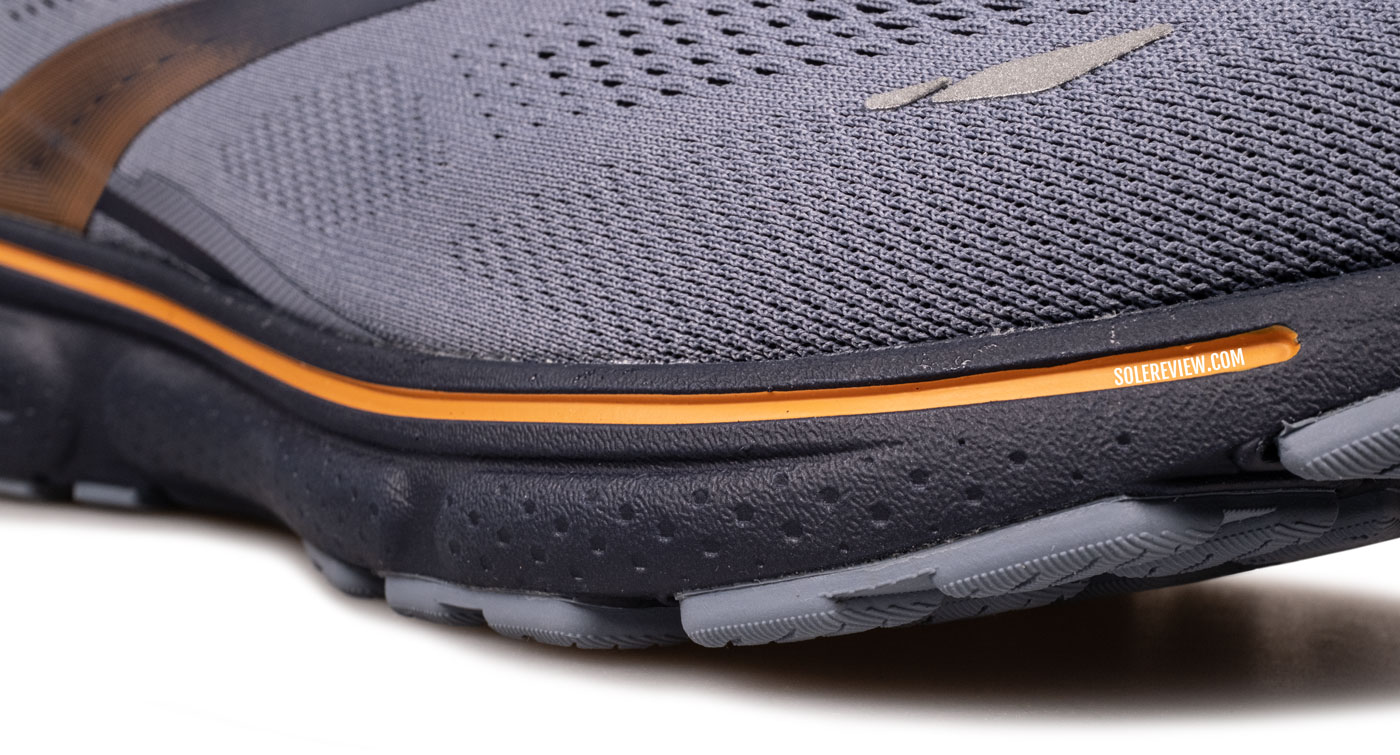
If you’re looking for a plate or a forefoot rocker, you won’t find it here. The midsole is just a layer of foam separating the foot from the road, that’s all.
There’s nothing inside the midsole, like a plate or cushioning insert for example. The foot has to do most of the heavy lifting, as it works through the relatively flexible forefoot at toe-off. There are no transition-assist features on the Ghost.
To put it succinctly, the ride experience is very muted.
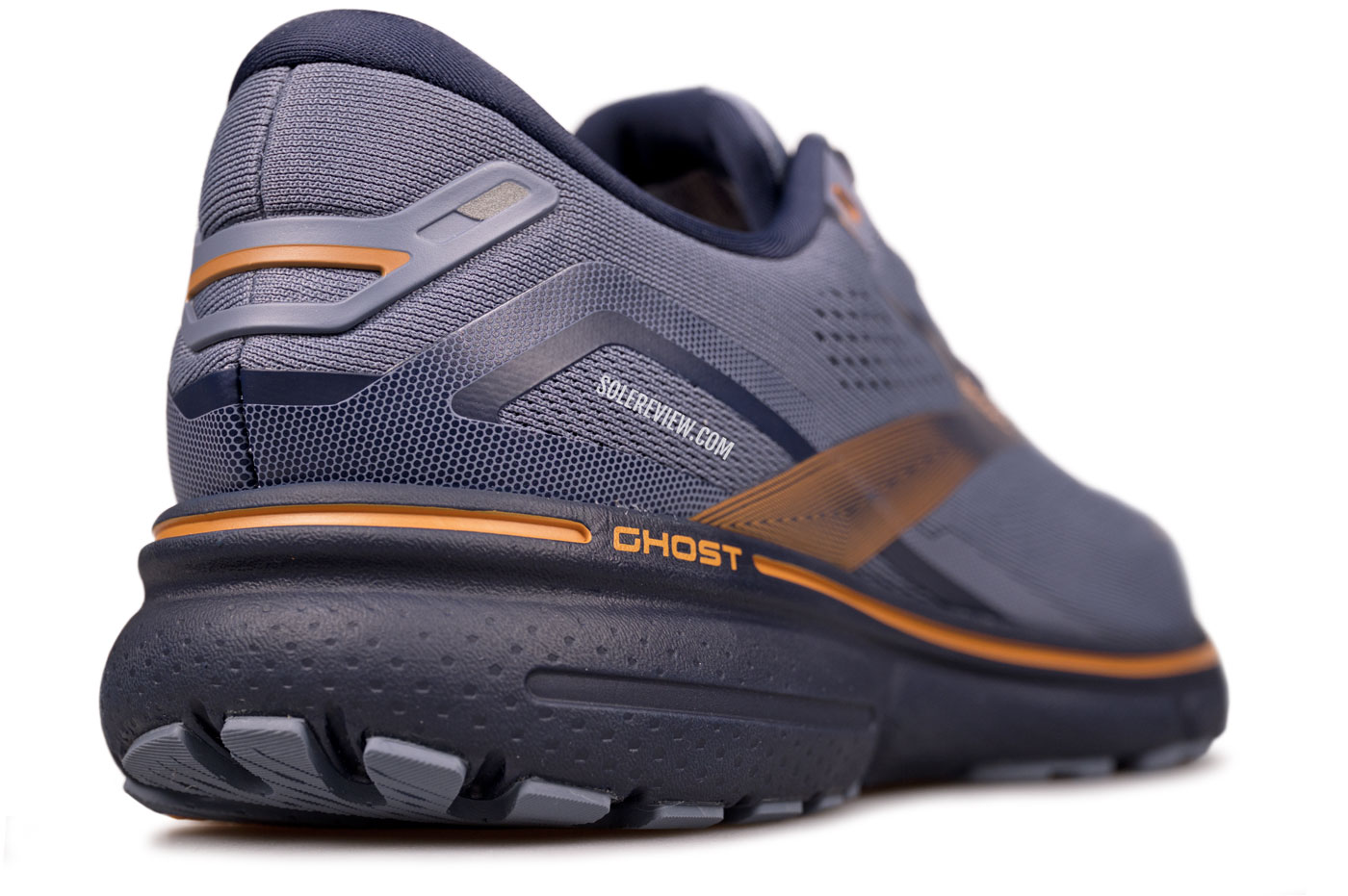
The Ghost feels like a 2012 shoe with modern aspirations. It hasn’t shaken off its high heel-to-drop of 12 mm, though.
This is also a 12 mm heel drop shoe, so the heel is noticeably thicker than the forefoot. While forefoot or midfoot striking is doable here, the Ghost 15 is the quintessential heel-striker’s running shoe.
The third, and easily the most underrated property of the Ghost 15 is its predictability.
What you see is what you get – unlike many running shoes, the supportive midsole doesn’t deform (excessively) when loaded. This is good for two things. One, the variance between the static (at rest) and loaded (when running) heel-to-toe drop is minimal.
So if Brooks says that the heel drop is 12 mm, it stays within that range most of the time. In contrast, (other) softer shoes with a published 10 mm drop may briefly turn into a 5 mm shoe due to the compression travel.
We also view this as beneficial for recovering runners who want a no-nonsense shoe that delivers a constant and predictable ride behavior.
Running shoes with excessive midsole compression – particularly on the inner or medial side – may lead to additional work for the body. On such shoes, the body will try to compensate for the shortcomings of the shoe. The predictable design of the Ghost 15 keeps such drama in check.
The following pictures explain what we mean.
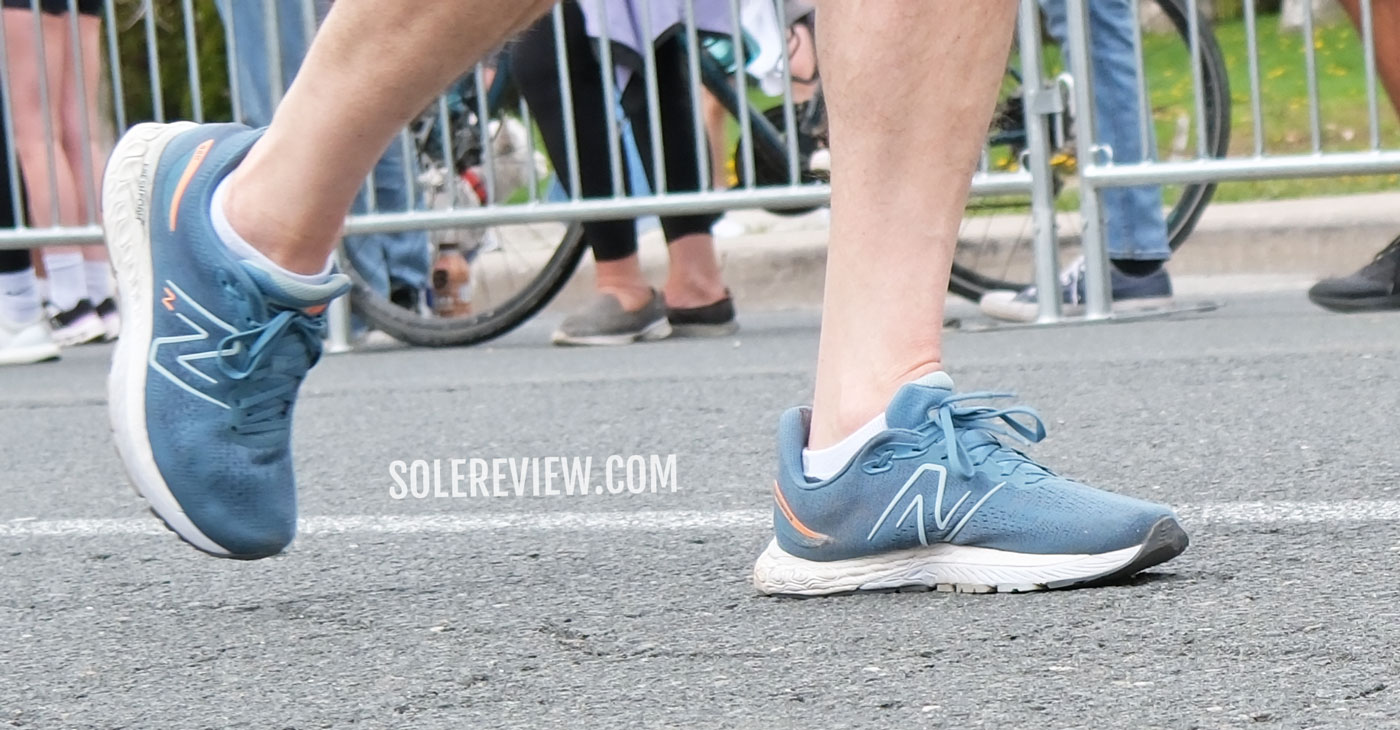
New Balance 880’s midsole during loading. There’s a fair bit of compression happening during heel strike.
Here, it’s apparent how the Brooks Ghost 15 retains its midsole structure when fully loaded. Competing shoes like the New Balance 880 and Nike React Infinity 3 demonstrate a less-than-ideal result under similar circumstances.
The Brooks Ghost 15 is a good fit for many use cases. This is a dependable everyday trainer for most occasions. There’s enough cushioning for up to a half-marathon distance, and there’s no degradation in performance at 5:00 min/km (8:00 min/mile) speeds.
At its core, the Brooks Ghost 15 is unmistakably an old-school neutral trainer – so trying to go quicker feels like more work. For example, while we found the Ghost 15 to be an excellent ‘wear-it-and-forget-it’ shoe for slow 10K training runs, trying to coax tempo runs feels like a chore.
As the Ghost 15 is not the right shoe for speed work, our rotational recommendation is a good place to explore alternatives.
It’s also a solidly built, well-constructed trainer, thus being durable enough to be a daily beater.
The firm midsole is shod with lots of outsole rubber. In typical Brooks fashion, the forefoot gets a softer blown rubber for better grip, whereas the heel gets a two-piece landing zone molded out of hard-wearing rubber.
RECOMMENDED ROTATION
Brooks no longer sells a racing flat for shorter speed runs, so you’ll have to make do with the Hyperion – the successor to the Hyperion Tempo.
This lightweight speed trainer has a similar ride as the H-Tempo. The Nitrogen-infused DNA Flash midsole adds cushioning without the weight. It’s like Brooks’s version of the adidas Adios 8 – which, by the way, is another excellent speed trainer outside the Brooks assortment.
For long-distance runs and marathons, there are a couple of Brooks options. Coincidentally, both are named Hyperion.
The first is the $170 Hyperion Max – a more cushioned version of the $140 Hyperion with a rocker midsole. This makes the H-Max a better fit for longer runs than the base Hyperion. The combination of the rocker midsole and resilient DNA Flash makes the Hyperion Max quick enough for 3:30 min/km (5:30 min/mile) paces. It’s akin to a firmer version of the Asics Superblast.
If plate-equipped marathon racers are what you prefer, we suggest either the Brooks Hyperion Elite V3 or the Saucony Endorphin Pro 3. These shoes cost significantly more than the Hyperion Max or Asics Superblast, so only buy them if the Carbon plate is important to you.
IS THE BROOKS GHOST 15 DURABLE?
The Brooks Ghost 15 may not be the most exciting shoe, but it’s certainly not flimsy. The result of accumulated refinements has led to a running shoe that’s very capable of withstanding everyday mileage.
The firm midsole retains its cushioning over several hundred miles, and the same goes for the upper and thick outsole. In most cases, the Brooks Ghost 15 will easily reach a lifespan of 450 miles.
THE UPPER DESIGN AND FIT
Of all the popular neutral trainers, the Brooks Ghost has been the most consistent in its fit between versions. The Ghost 15’s fit doesn’t feel all that different from the Ghost 8, and that’s quite something.
Like always, the Ghost 15’s true-to-size upper has a conforming fit – be it the forefoot, midfoot, or heel.
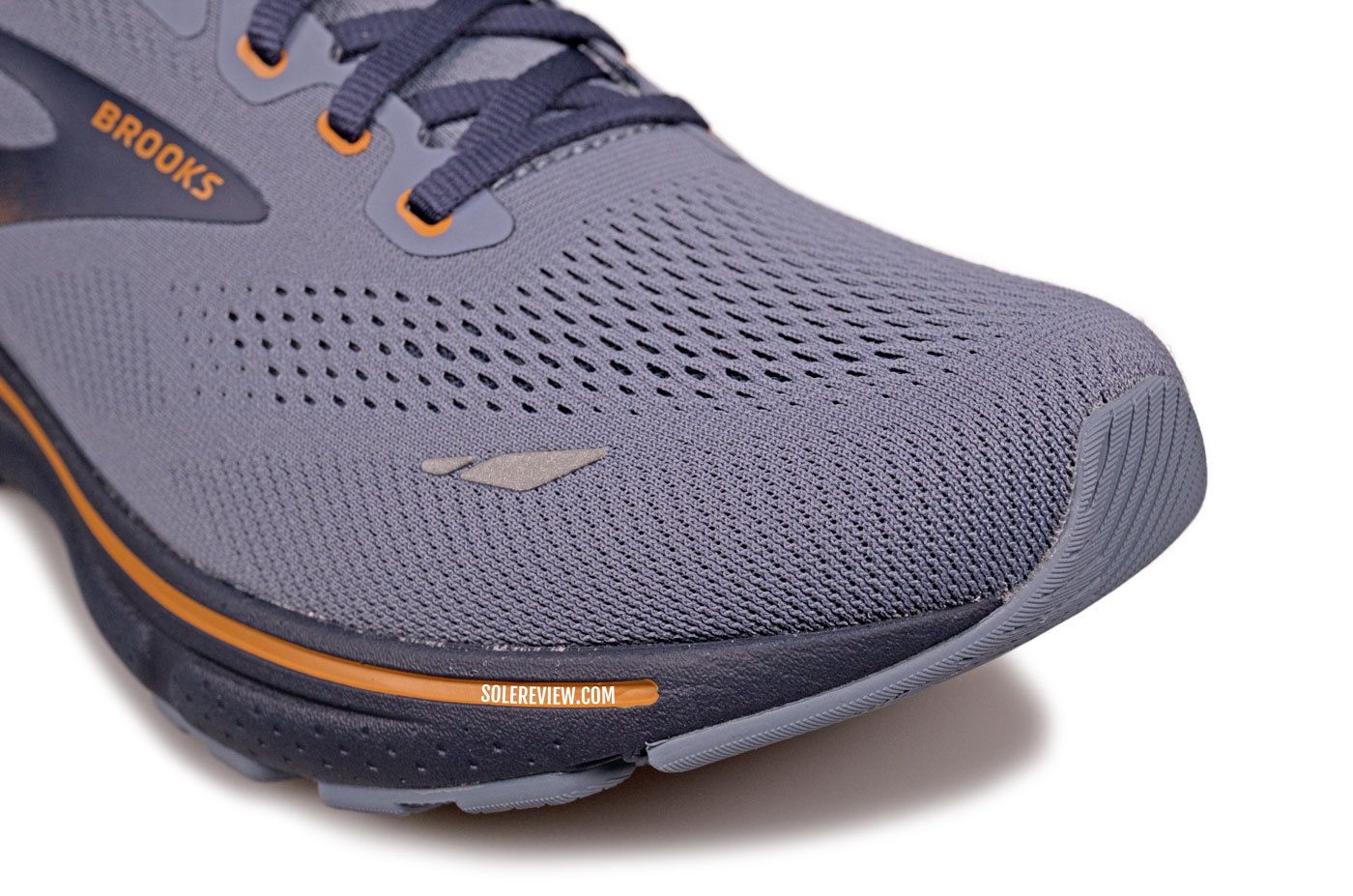
The toe-box is molded with an internal bumper. This creates just the right amount of ceiling height. The fit runs true to size.
The internal toe bumper dedicates space around and above the toes. The upper locks the forefoot in, but without excessive tightness. There are optional widths, including a narrow (B), wide (2E), and an extra-wide. (4E)
The stiff heel counter and plush collar create a reassuring locked-in feel. The padded tongue doesn’t have a sleeve, but it doesn’t slide – at least not to the extent that it matters.
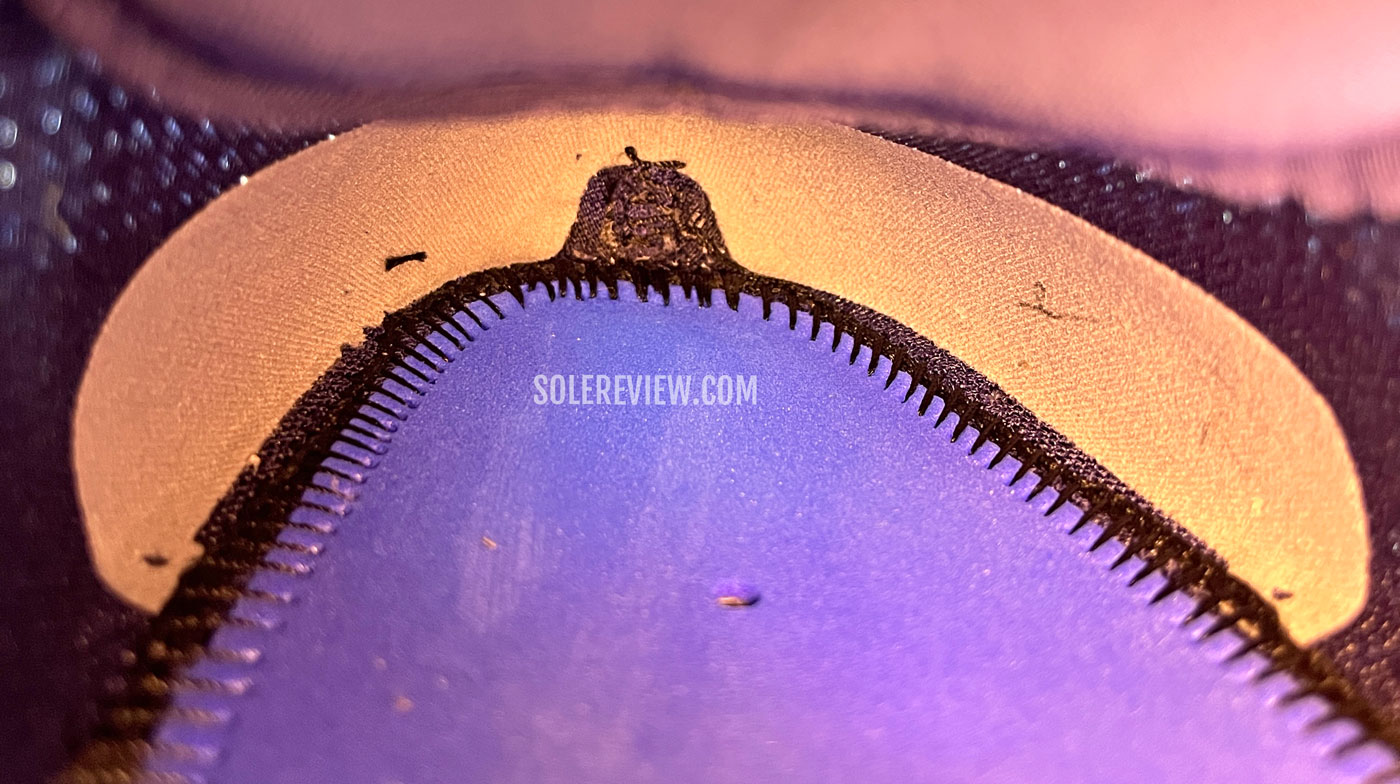
The breathability is good for short-distance runs during summers. Over 10K, the upper tends to trap heat.
The Ghost 15 is not very breathable, so it isn’t a great shoe for long runs during summers. Even a 10K in 25° C/77° F conditions made the feet sweat. It’s nowhere as warm as the Asics Nimbus or Cumulus, so the Ghost is a good three-season running shoe.
Brooks also sells a waterproof Gore-Tex version for a $30 premium.
Besides the just-right fit, another area where the Brooks outperforms its peers is the quality of materials and trim. Everything feels well stitched together and upmarket; small details like the molding on the heel and the welded Brooks logo elevate the visual appeal.
There’s not much to offer in reflectivity – just a couple of tiny bits over the forefoot and heel.
ORTHOTIC COMPATIBILITY
The Brooks Ghost 15 has a removable footbed of decent thickness. It can be substituted with an aftermarket orthotic without affecting the upper fit. Store-bought insoles like the Superfeet can be accommodated without compromising the fit.
Like any insole substitution, the incoming footbed has to match the dimensions of the stock insole, or at least come close.
An orthotic with a thicker heel will alter the heel-to-toe drop. A softer Orthotic will increase the step-in softness, while a rigid insert will do the opposite while increasing the stability.
PROS AND CONS
The Brooks Ghost 15 may be boring and lacks the pep to be a tempo shoe, but that’s no fault of the shoe.
Every running shoe has a character, and the Ghost knows what it’s good at. It’s a predictable daily beater with an excellent fit, ride consistency, and higher-than-average stability. The fit and finish is pleasing, as is the overall sense of robust build quality. The additional widths are an underrated option.
The low levels of ventilation could be potentially improved. The upper tends to heat up once past 10K, so why can’t the Ghost 15 be like the breathable Saucony Ride 16?
COMPARISON: THE BROOKS GHOST 15 VERSUS BROOKS GLYCERIN 20
Based on technical specs, the Ghost 15 and Glycerin 20 are a close match on weight. On closer inspection, two important distinctions come to light.
The first is the Glycerin’s use of the DNA Loft V3 foam.
While the material sounds similar to what the Ghost uses (DNA Loft V2), the Loft V3 is an entirely different compound. It’s a nitrogen-infused foam that behaves differently than the standard EVA foam. Our review does the in-depth thing with the Glycerin.
There’s a bit more ‘life’ in this cushioning material, so the overall ride experience doesn’t feel as flat as the Ghost 15.
One area where the Ghost 15 scores higher over the Glycerin 20 is its versatility. The Glycerin 20 may be more cushioned, but it feels bulkier with an inflexible forefoot. This makes the Ghost 15 a better fit for quicker paces, whereas the Glycerin 20 is a better fit for long-distance cruising.
Like the Ghost 15, the Glycerin 20 is a very stable shoe – easily the most supportive amongst its peers.
SHOES COMPARABLE TO THE BROOKS GHOST 15
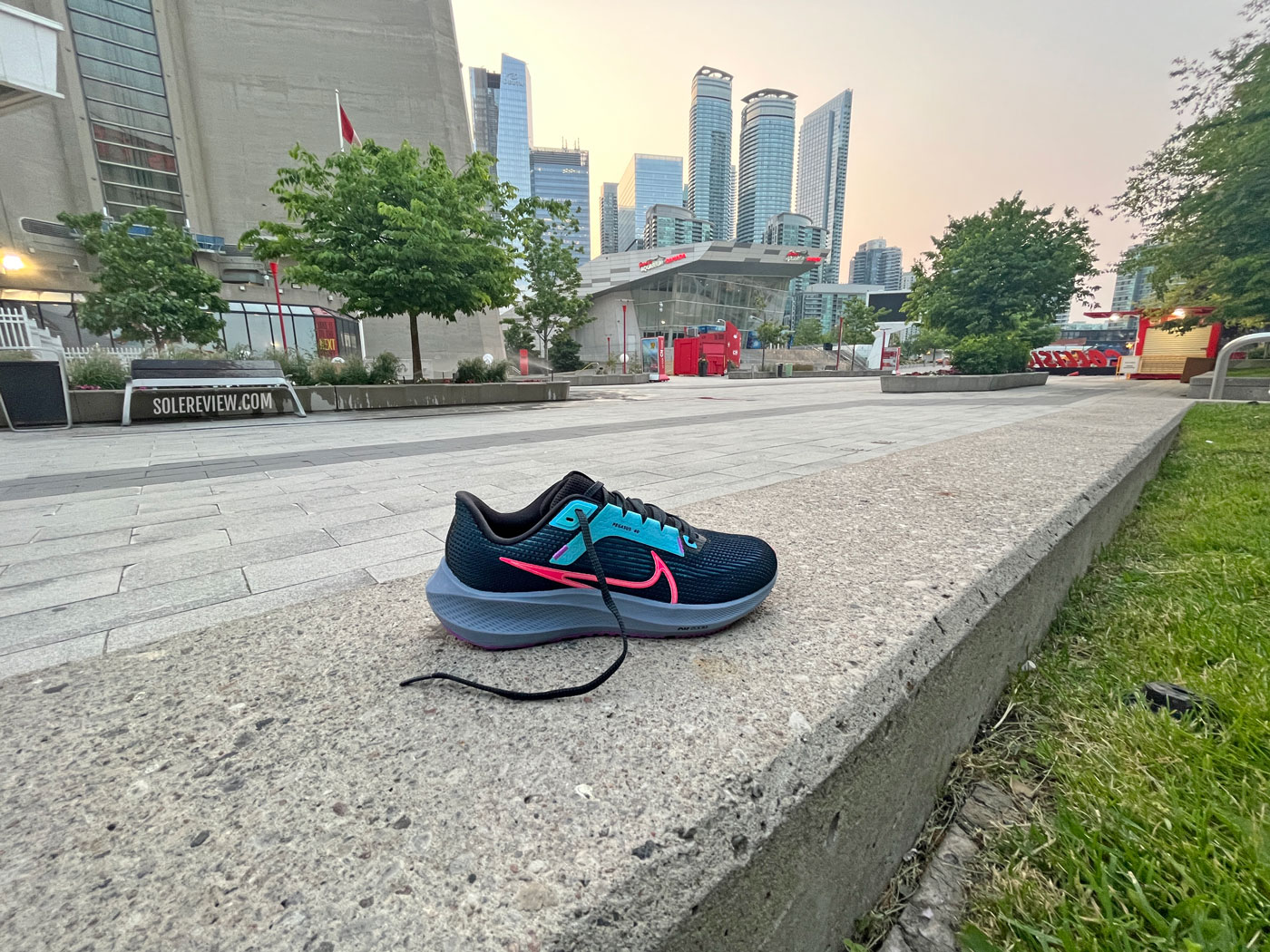
The Nike Pegasus is just as widely available as the Brook Ghost, and will score higher in a hypothetical popularity contest.
The just-released Structure 25 looks promising, but we haven’t put any miles on them yet. For now, we have other daily trainers like the Pegasus 40, Saucony Ride 16, and New Balance 880 V13 competing for shelf space with the Brooks Ghost 15.
From an availability standpoint, the Nike Pegasus 40 is as widely distributed as the Brooks Ghost 15. The Pegasus 40 is a great everyday trainer as well as the occasional half-marathon shoe.
The only real difference between the Pegasus 40 and Brooks Ghost 16 would be the versatility.
The Zoom Air bags add some pep to the Pegasus, thus making it a better fit for speeds quicker than 5:00 min/km (8 min/mile) than the Ghost. We have a similar opinion of the Saucony Ride 16. Its rocker midsole and firmer ride make the Ride 16 more versatile. The Ride 16 shares its midsole with the Ride 15.
Where the Brooks Ghost 15 scores is its overall build quality and upper fit. The level of fit and finish is higher than the others in its class. The mesh feels better, the insides are softer, and the upper just fits better overall.
Of all the shoes listed here, the New Balance 880 V13 is the closest match with the Ghost 15. It’s based on a traditional running shoe design that pairs a well-fitting upper with an EVA blend midsole. It’s slightly softer and less supportive under the heel than the Ghost.
The adidas Supernova 2 isn’t bad either. Lastly, the Asics Cumulus 25 competes with the Ghost in the same price range, but the latest redesign didn’t go as well as planned. The ride quality is nothing to write home about, the hot upper can get stuffy during summer.
Do you own this shoe? Improve this review by sharing your insights.

